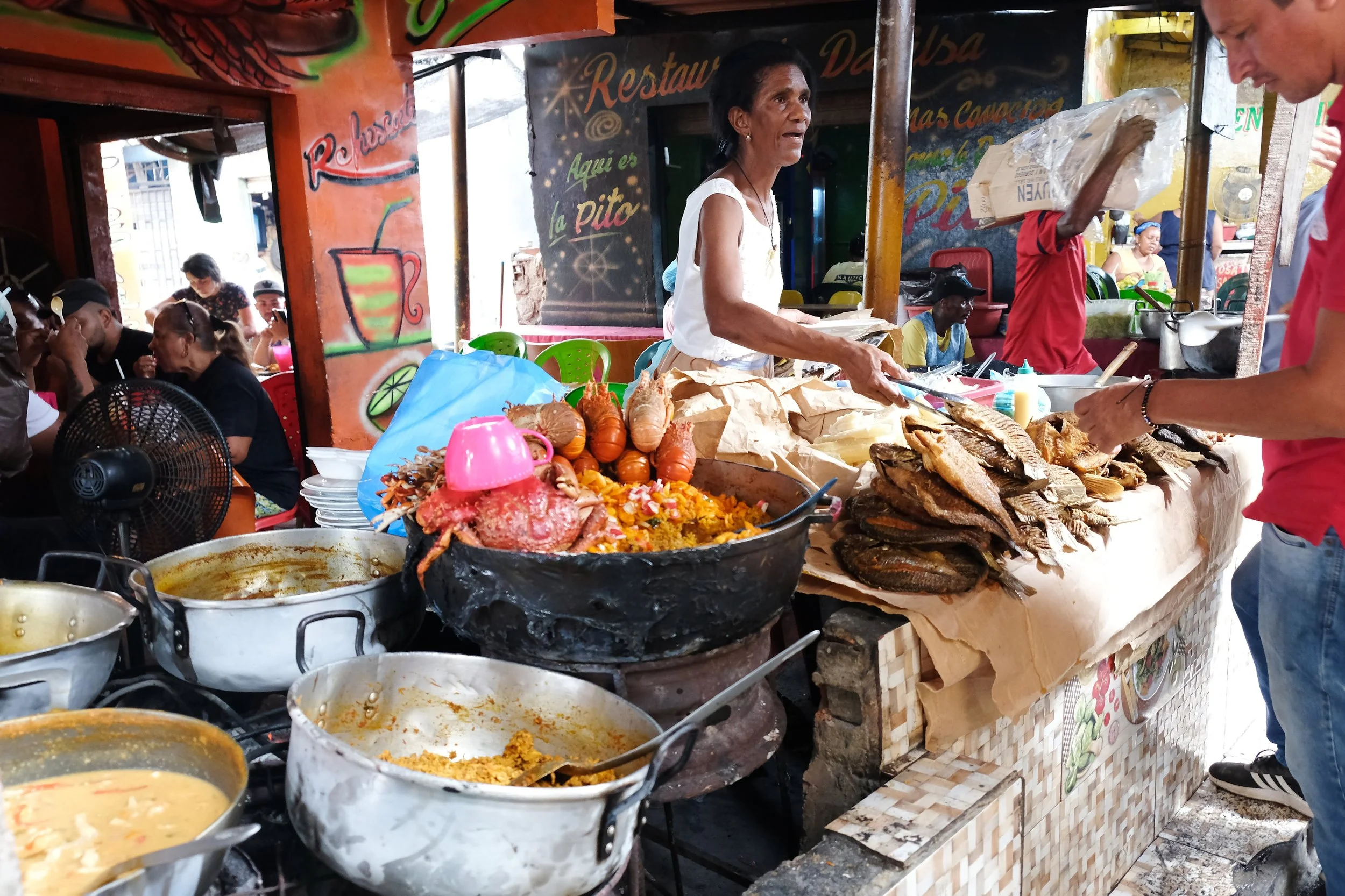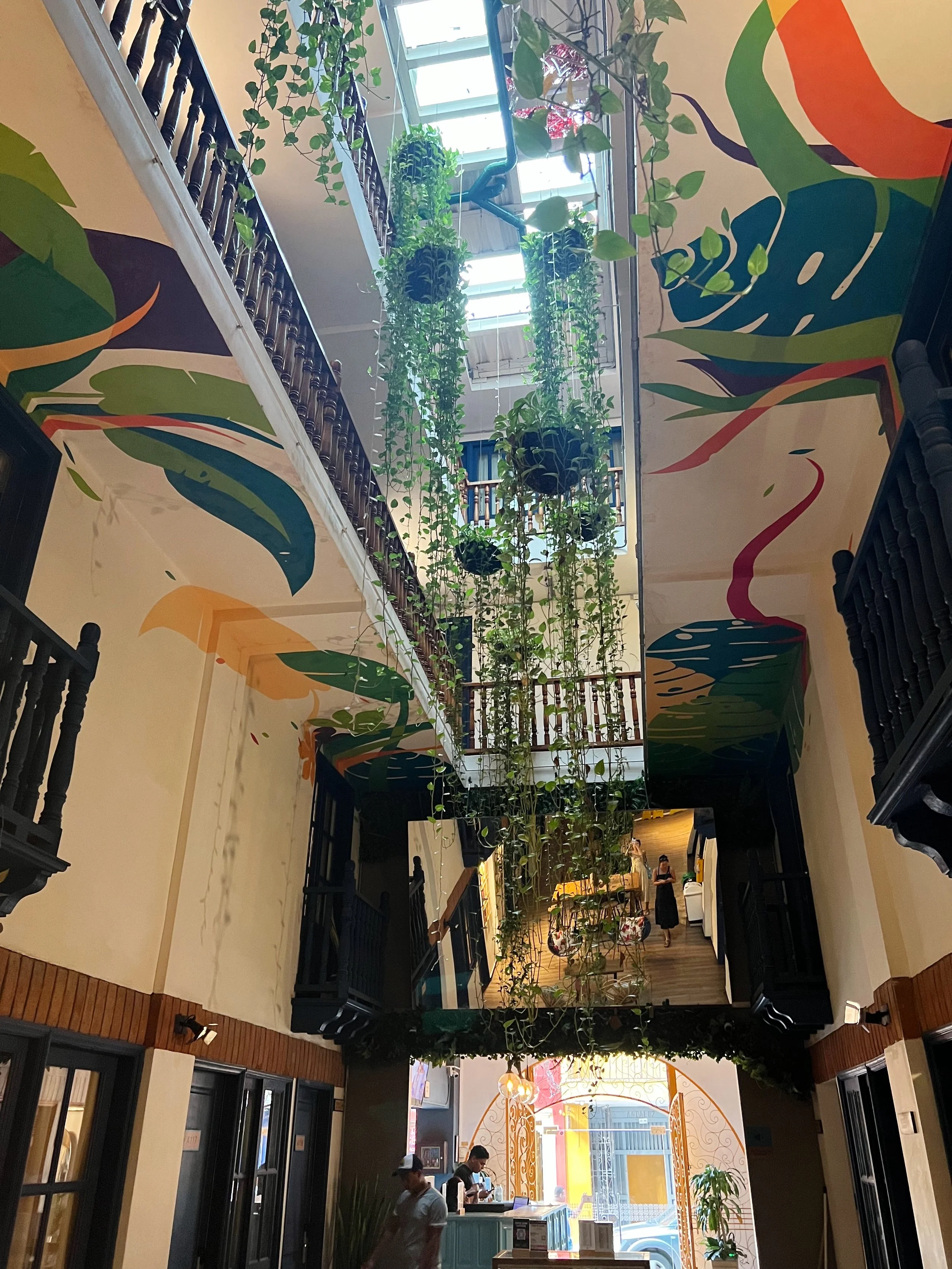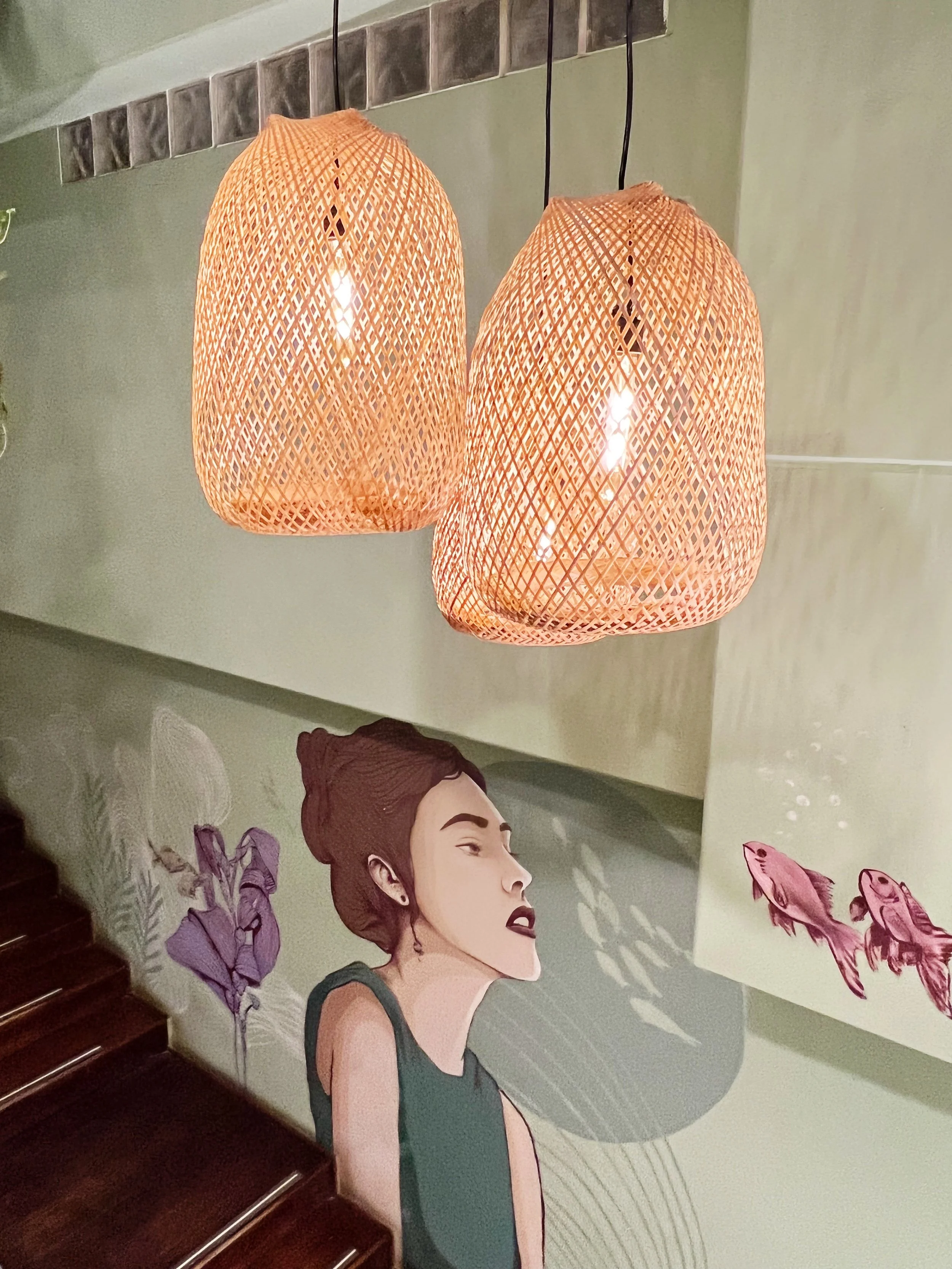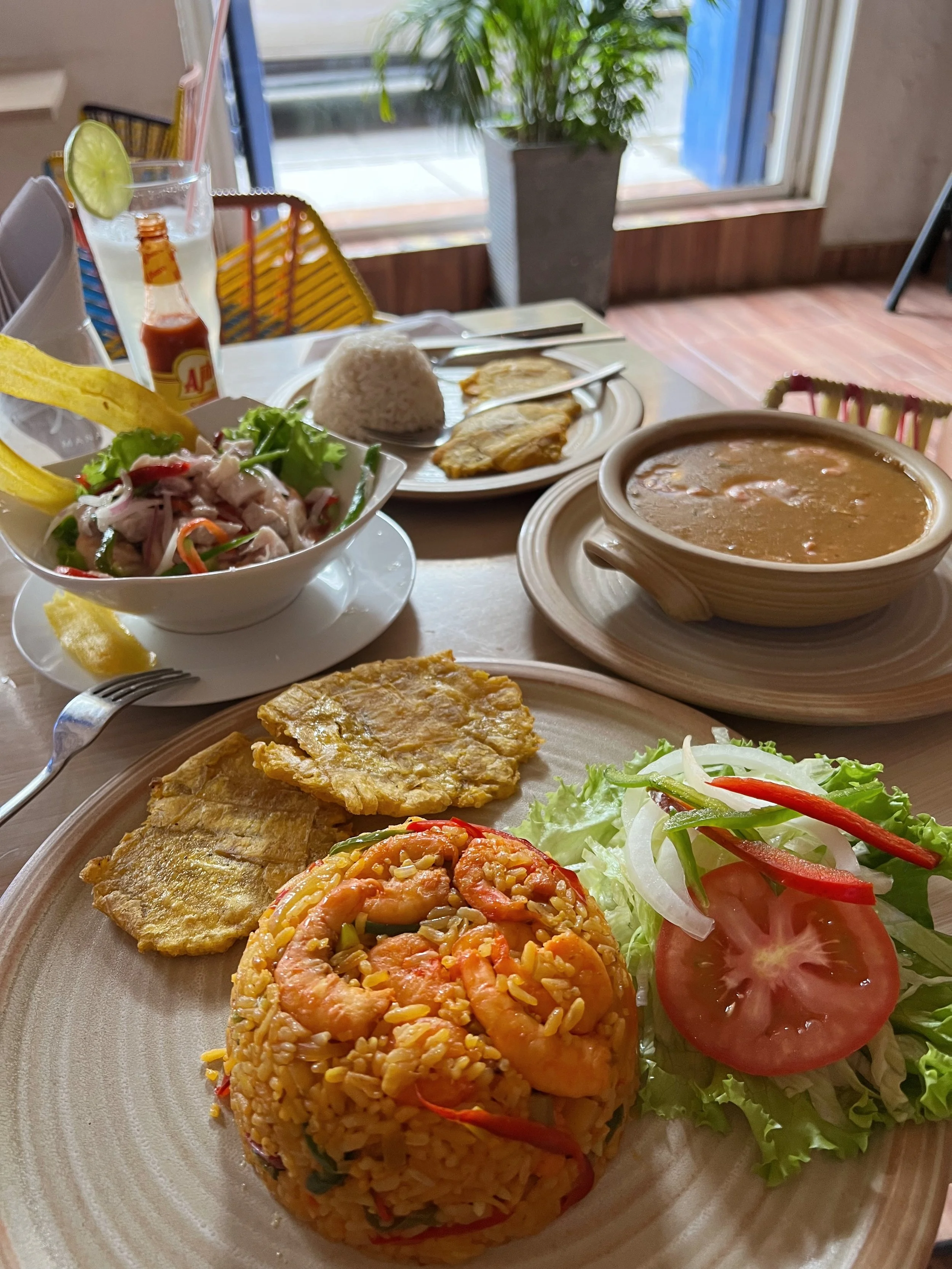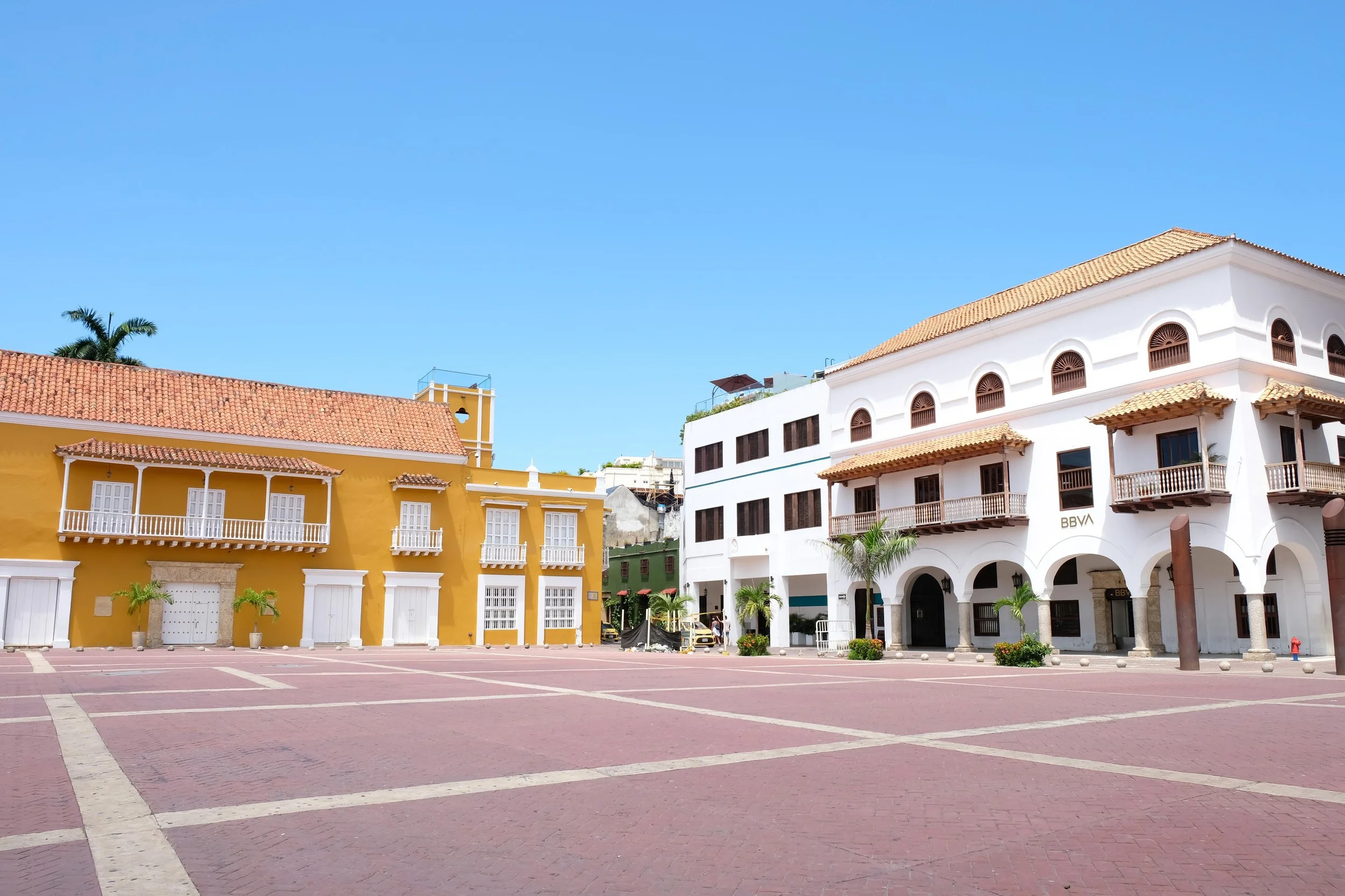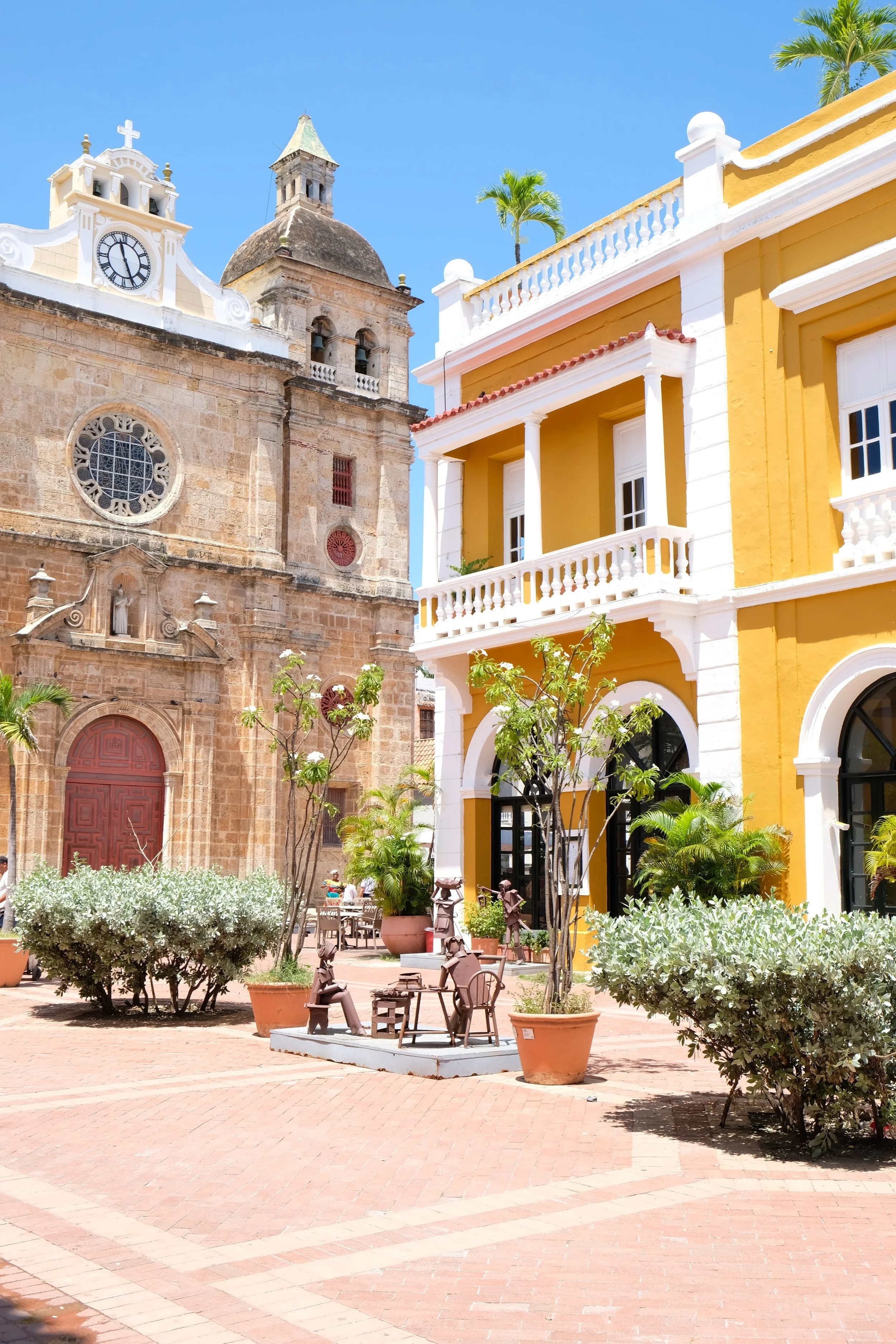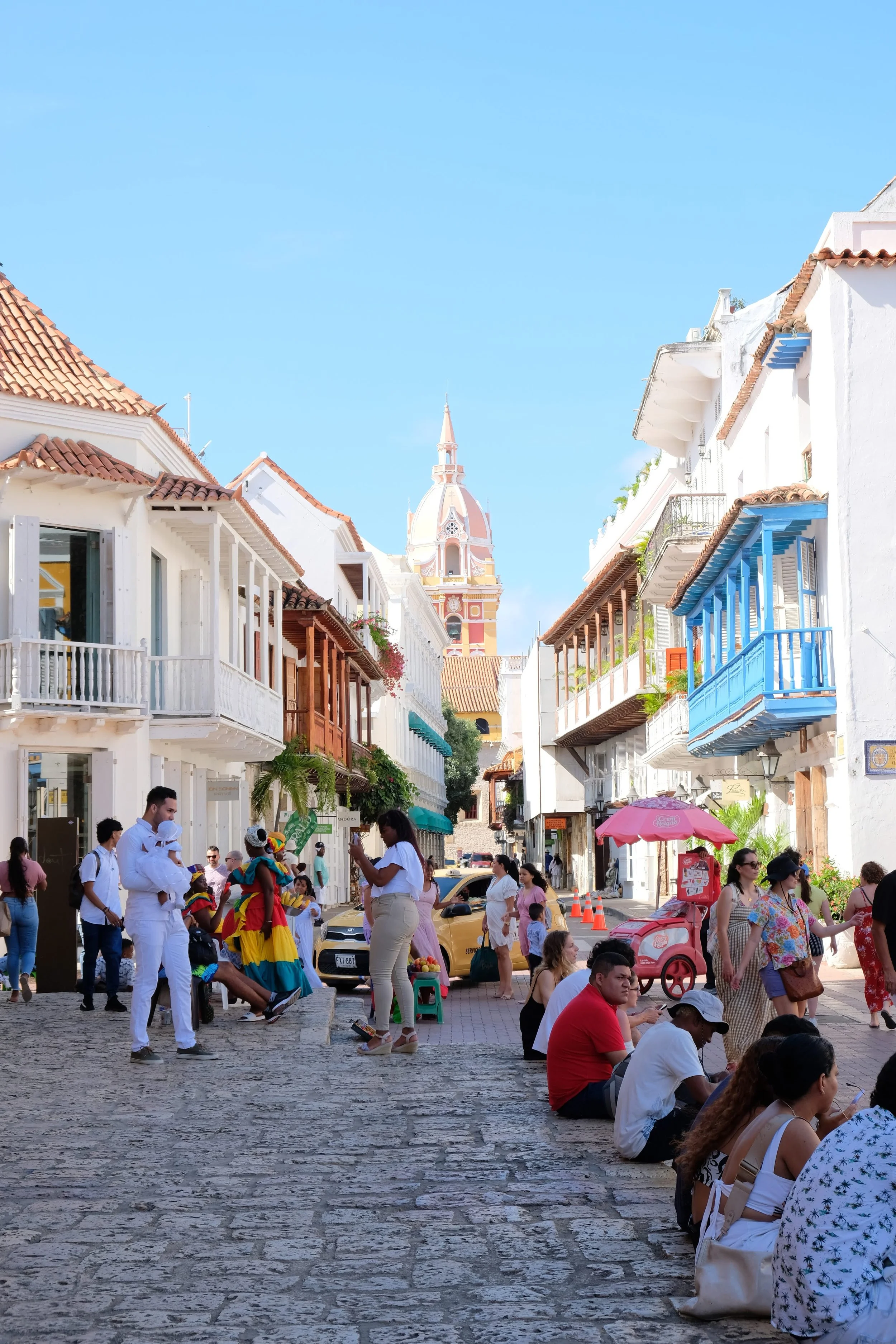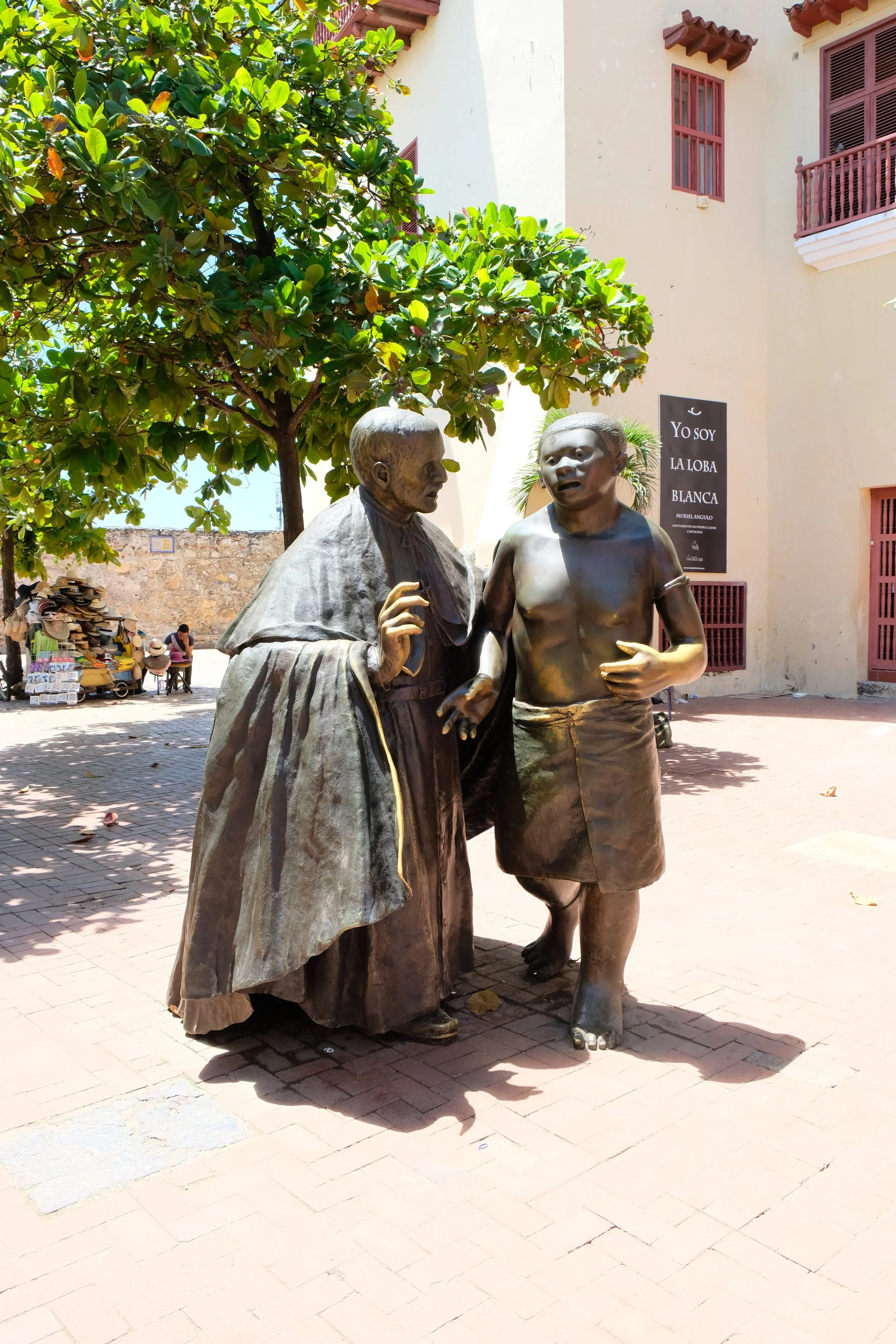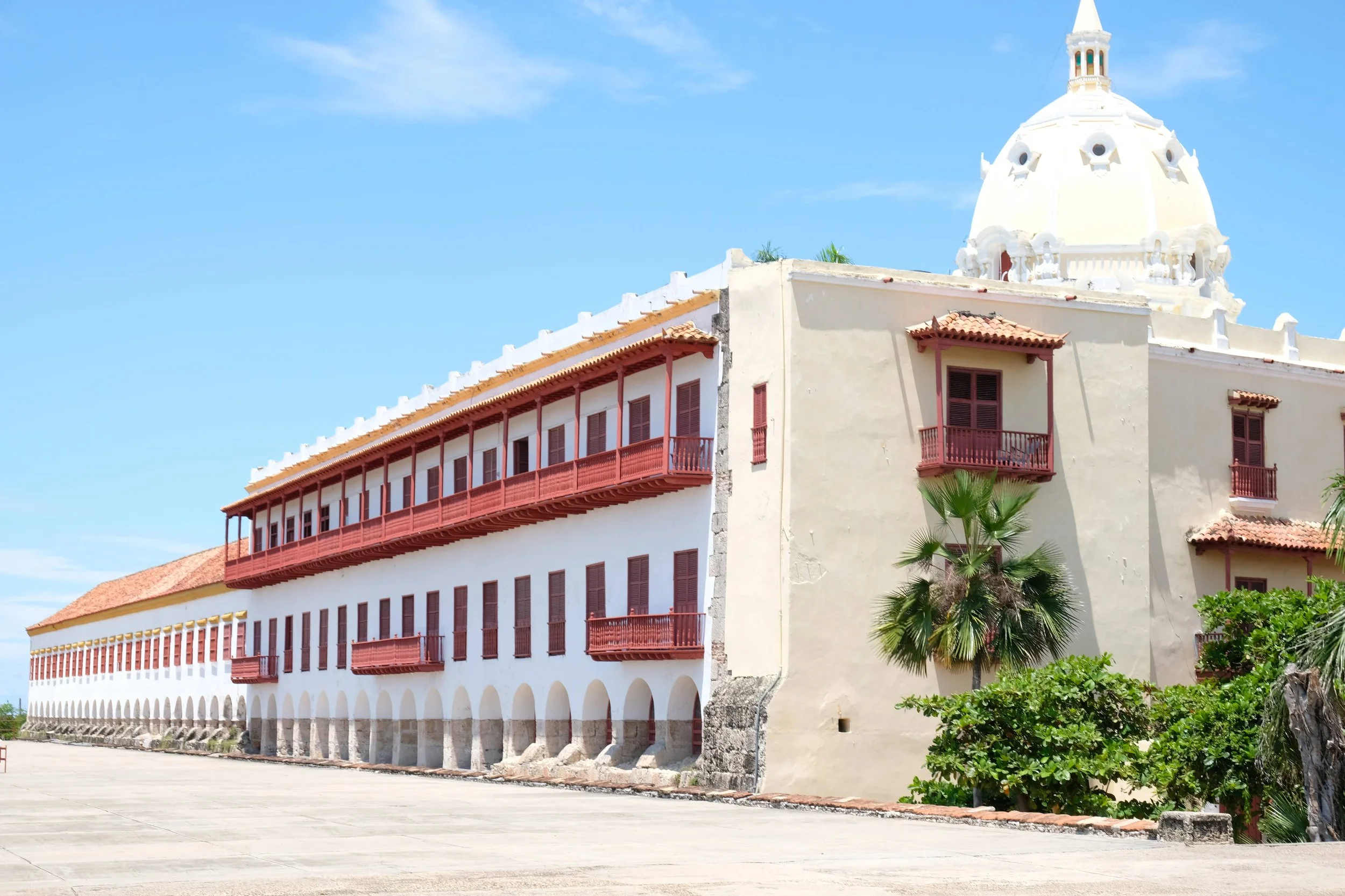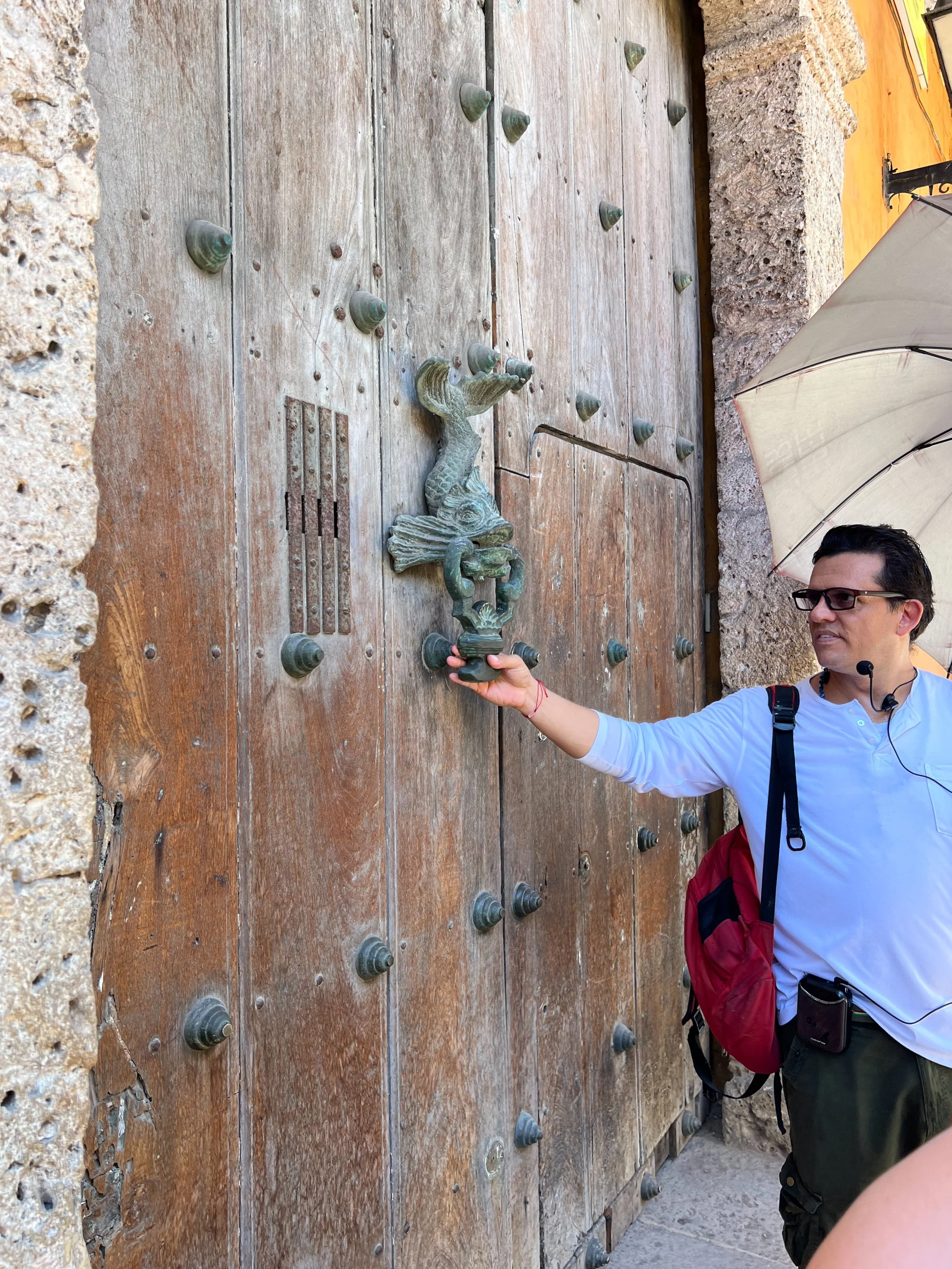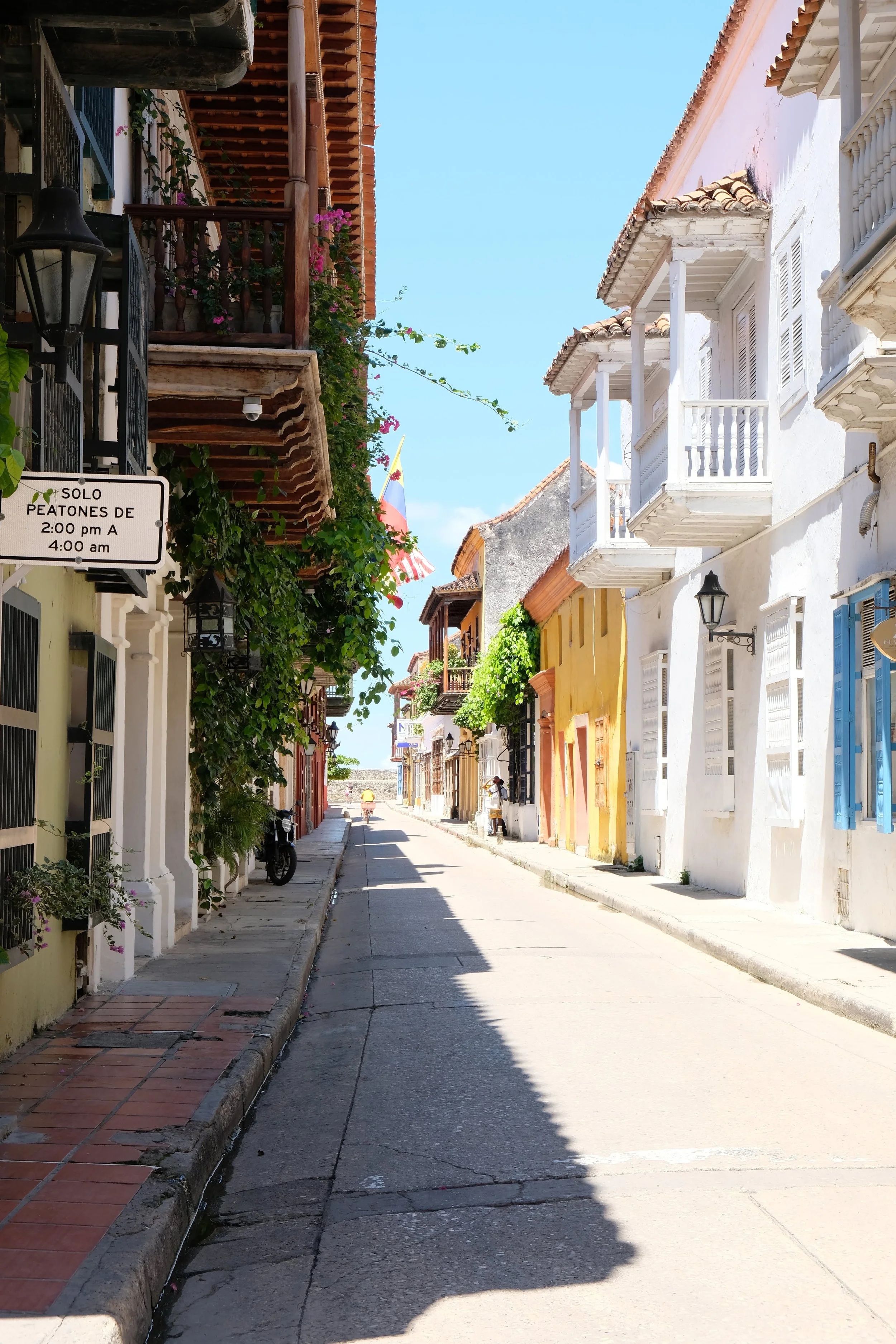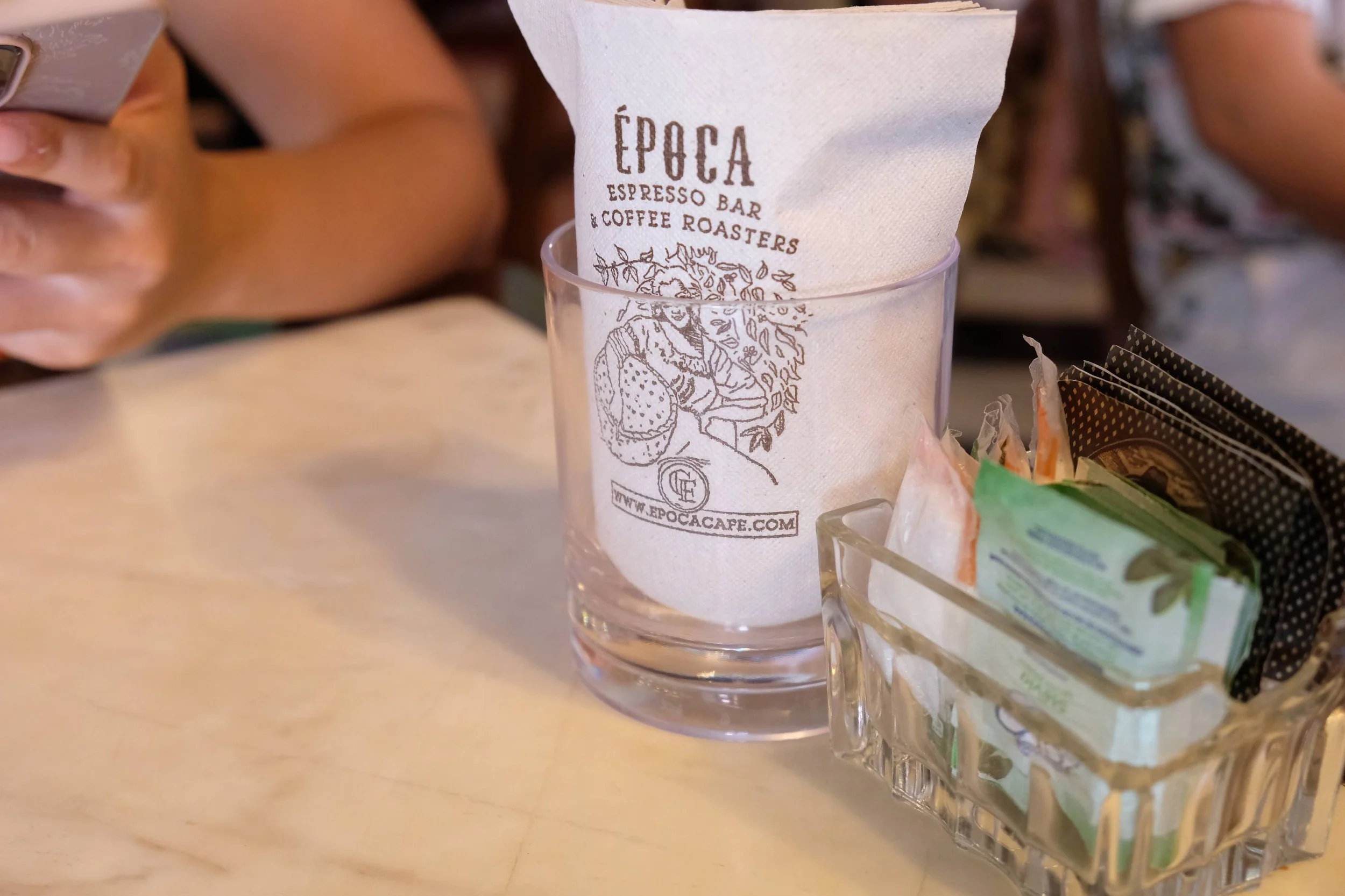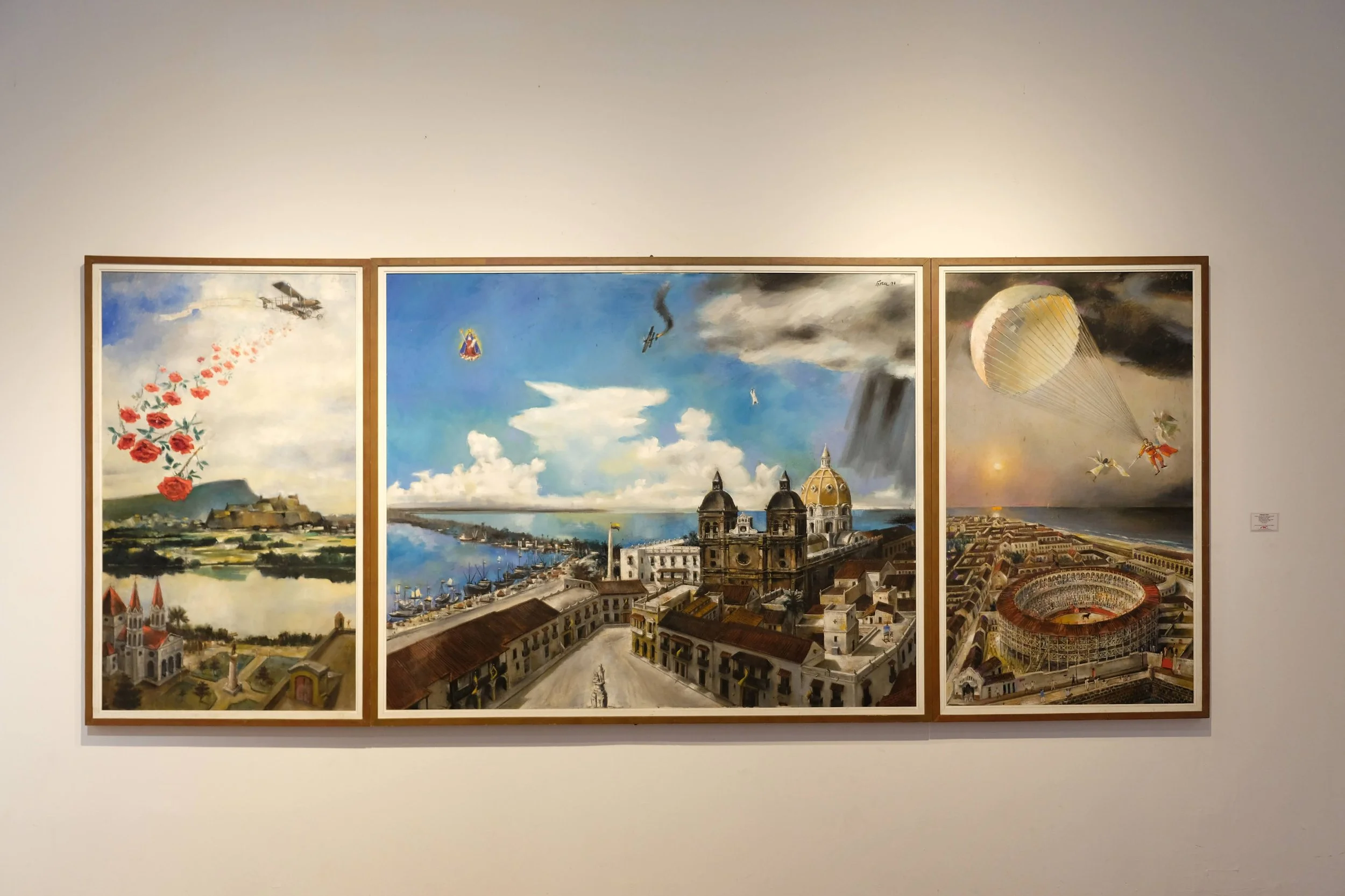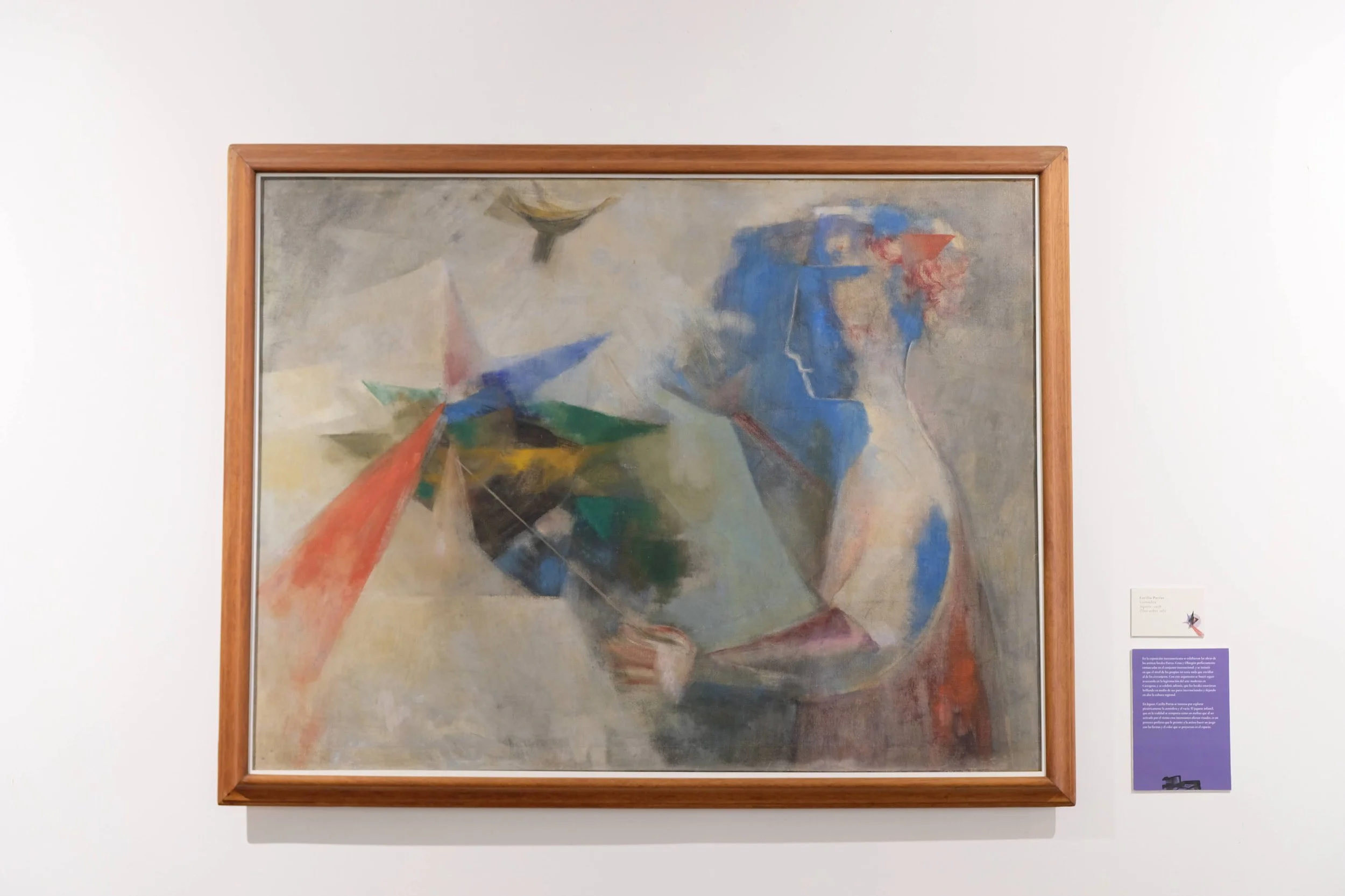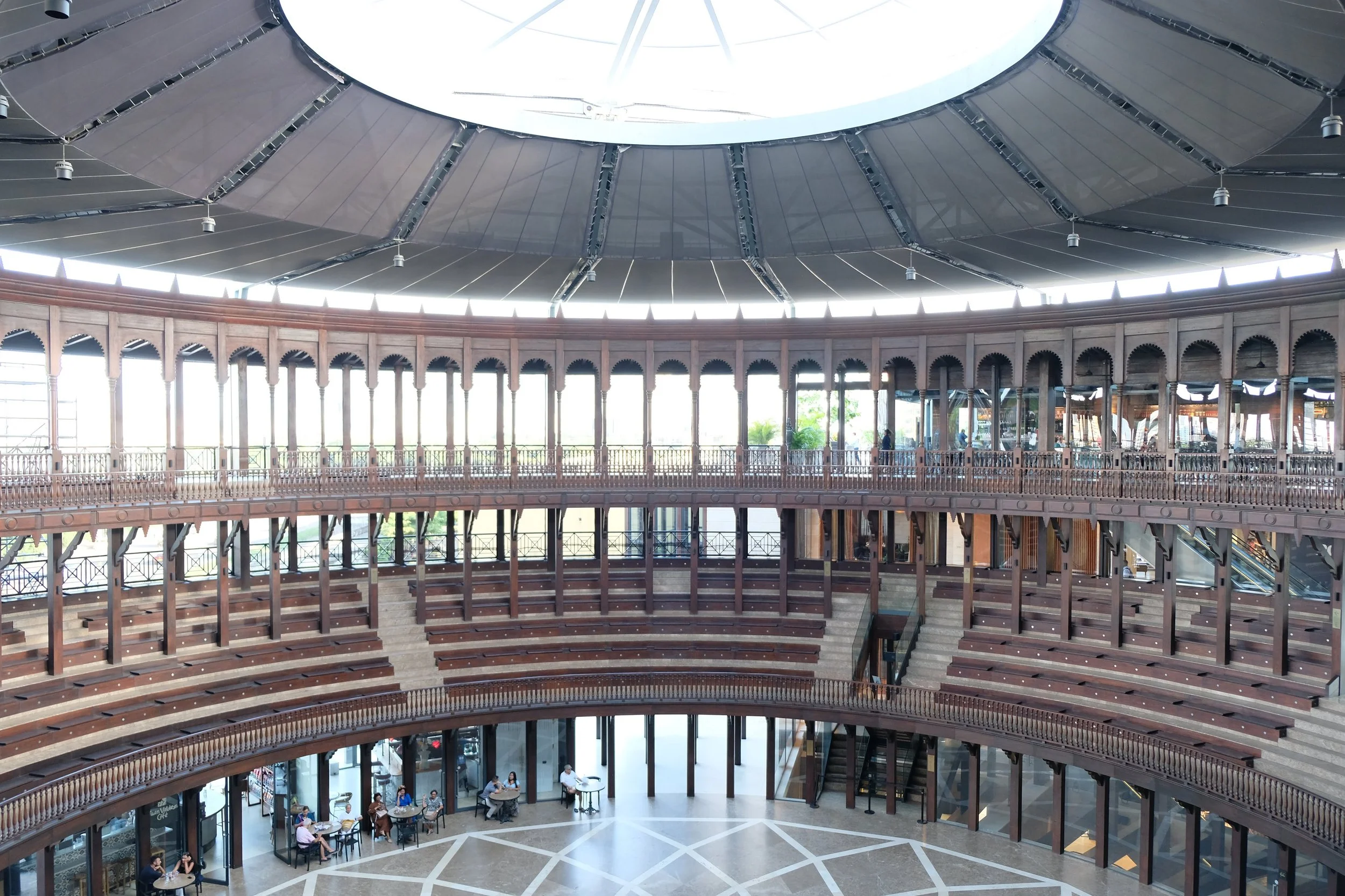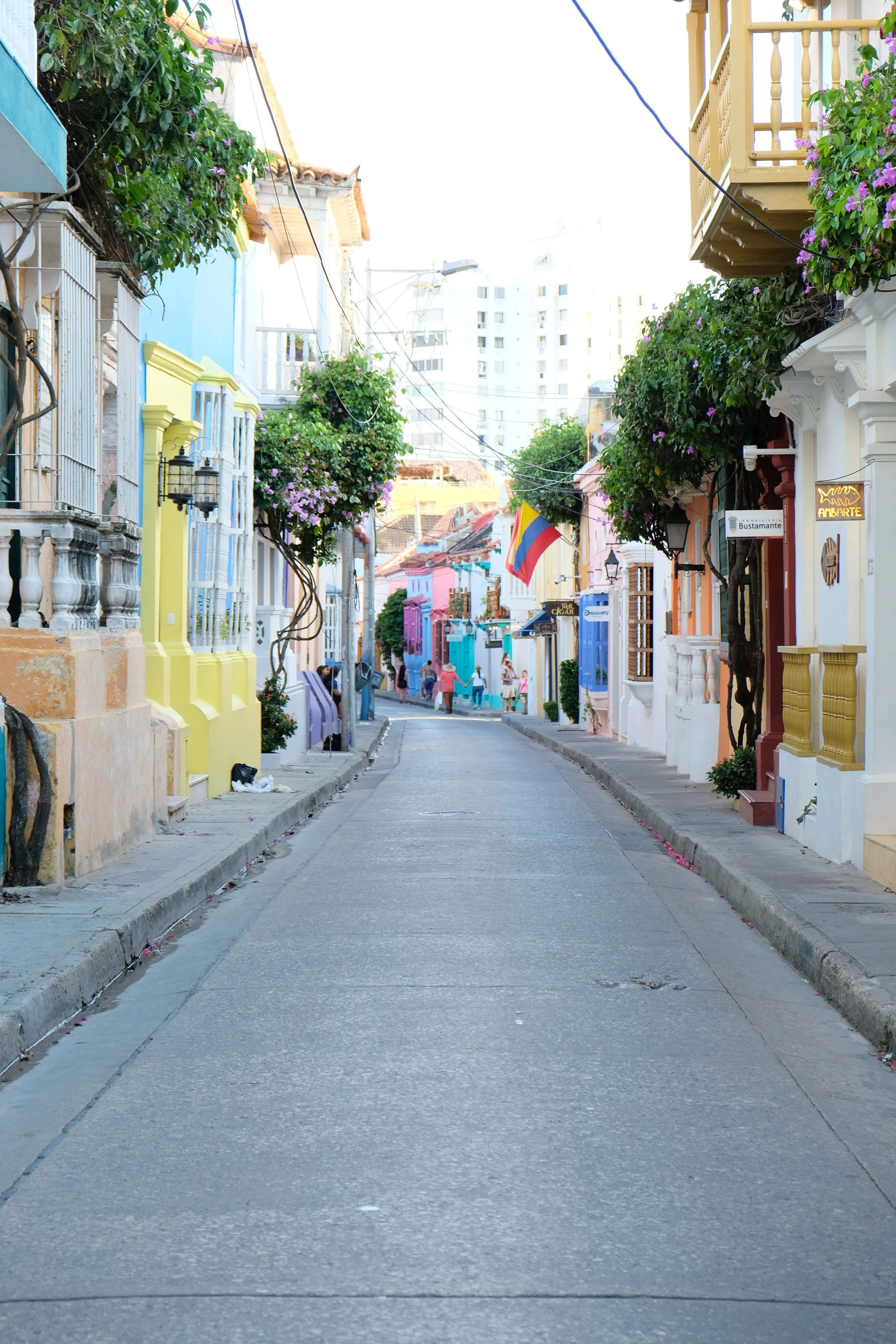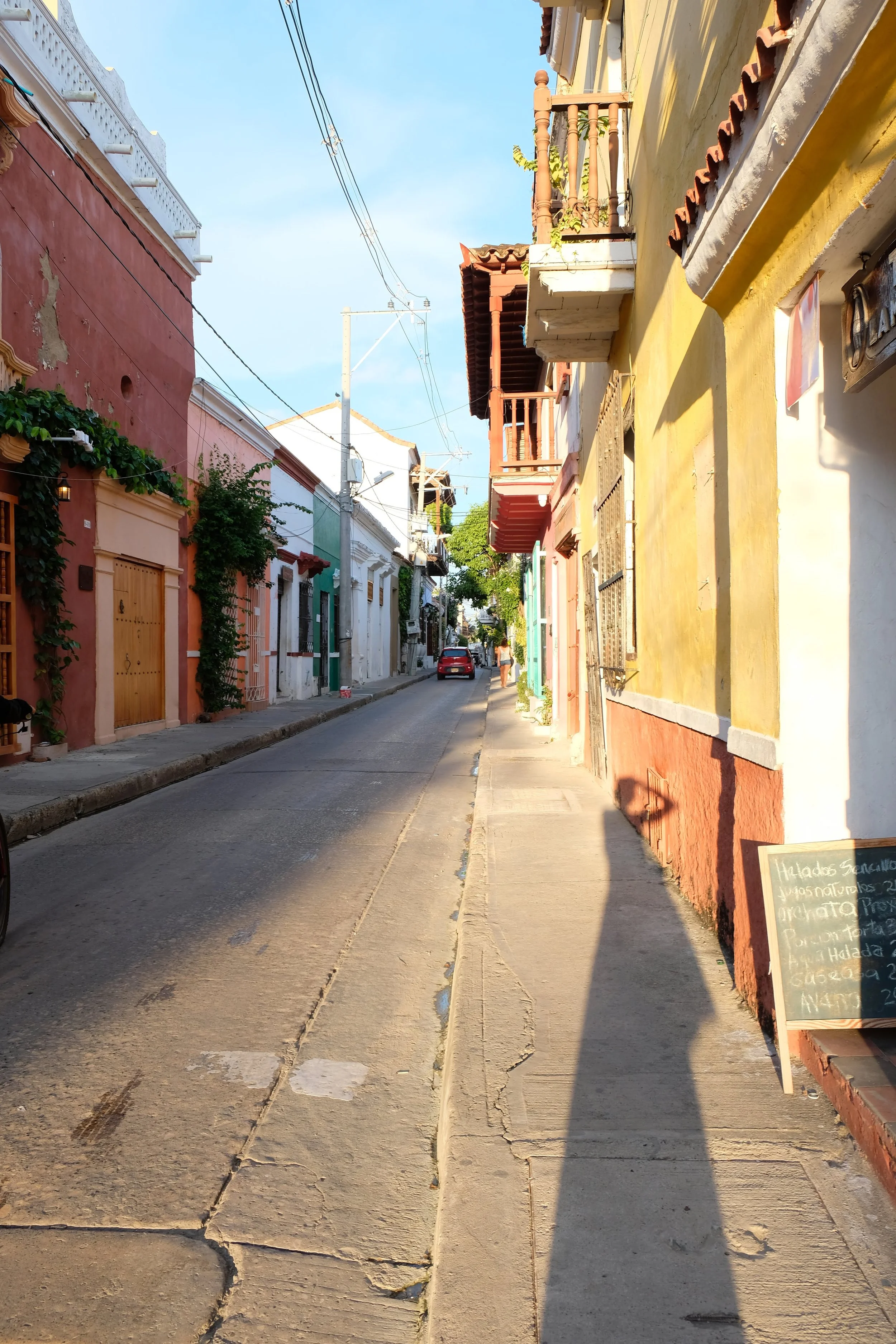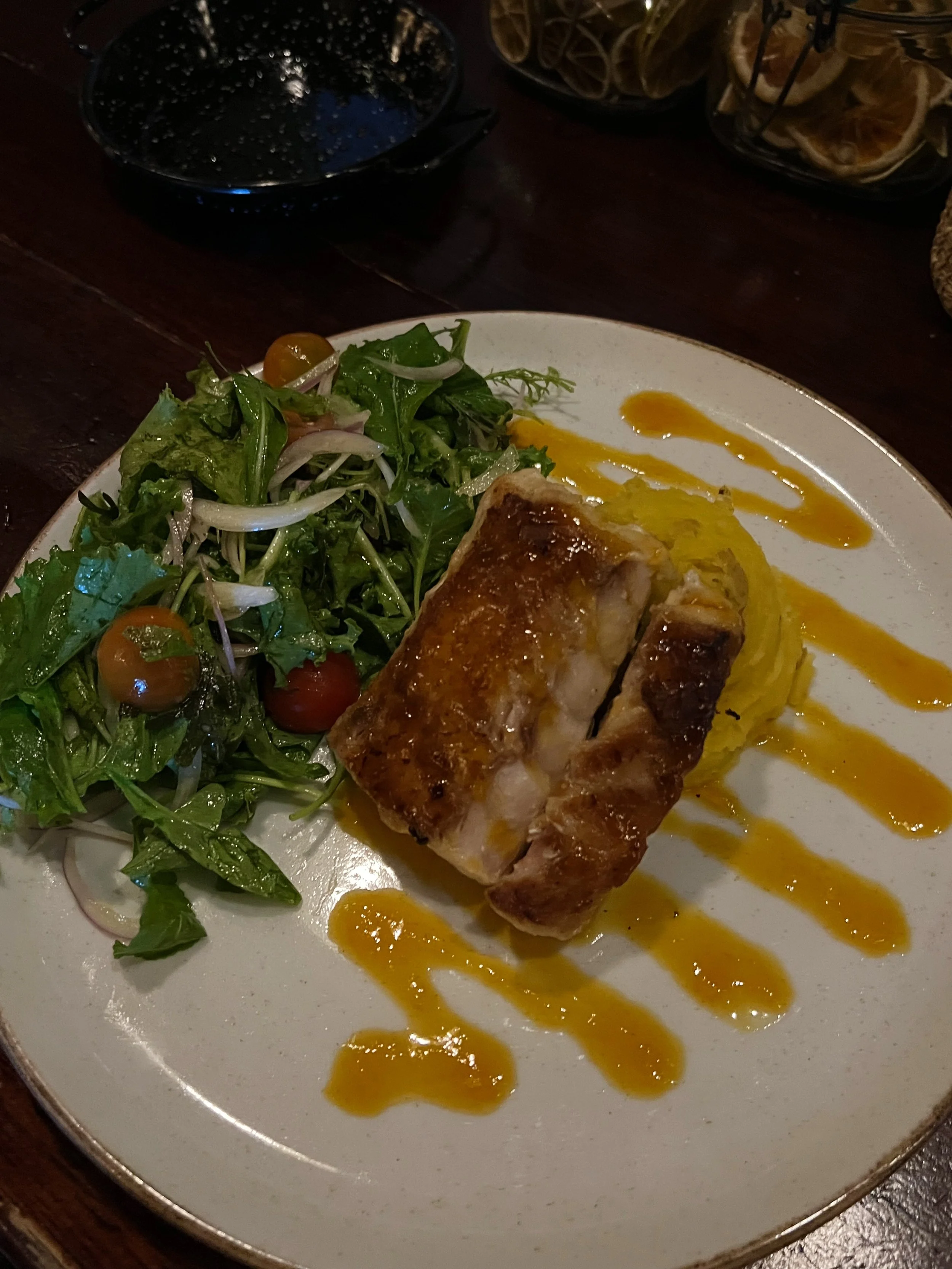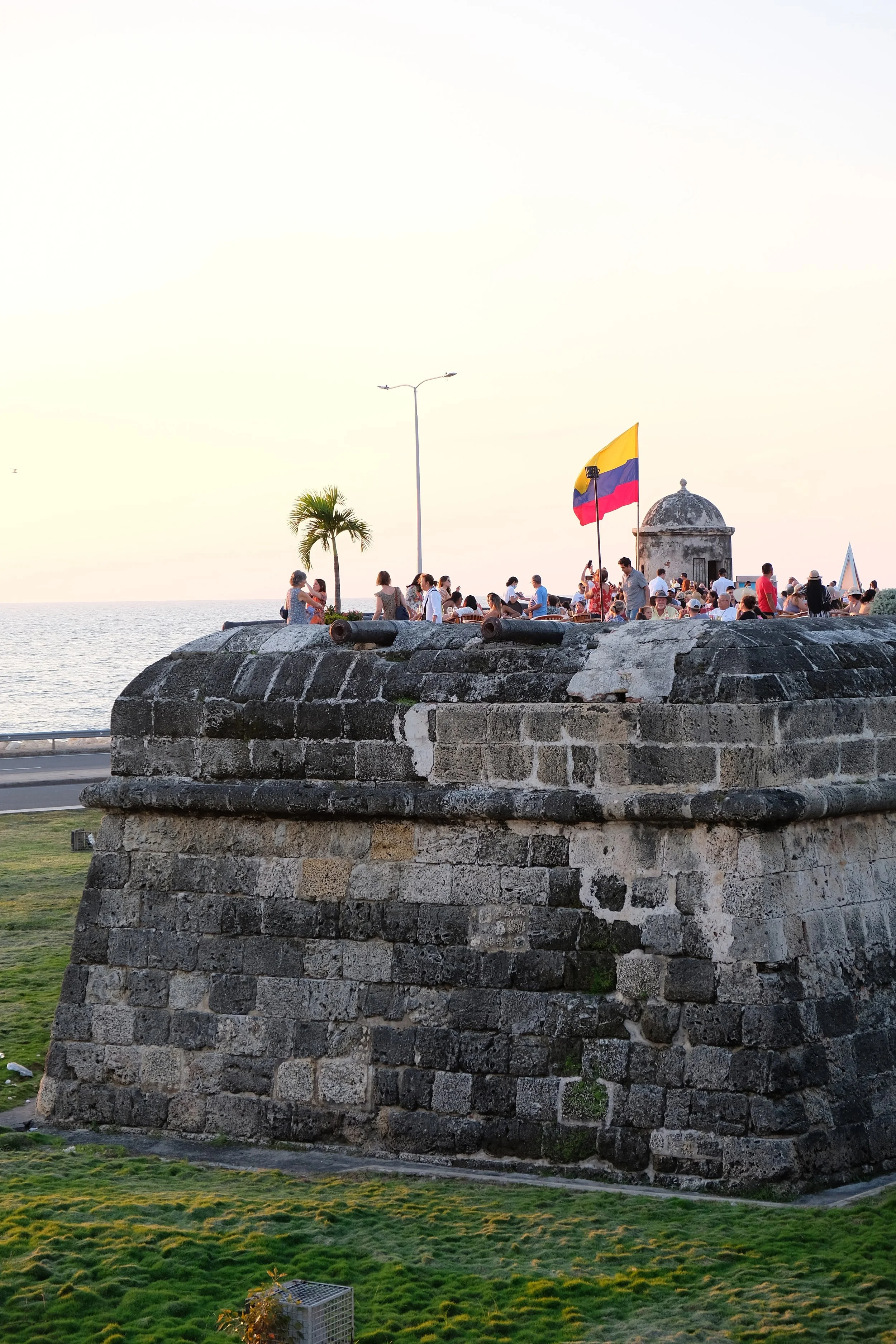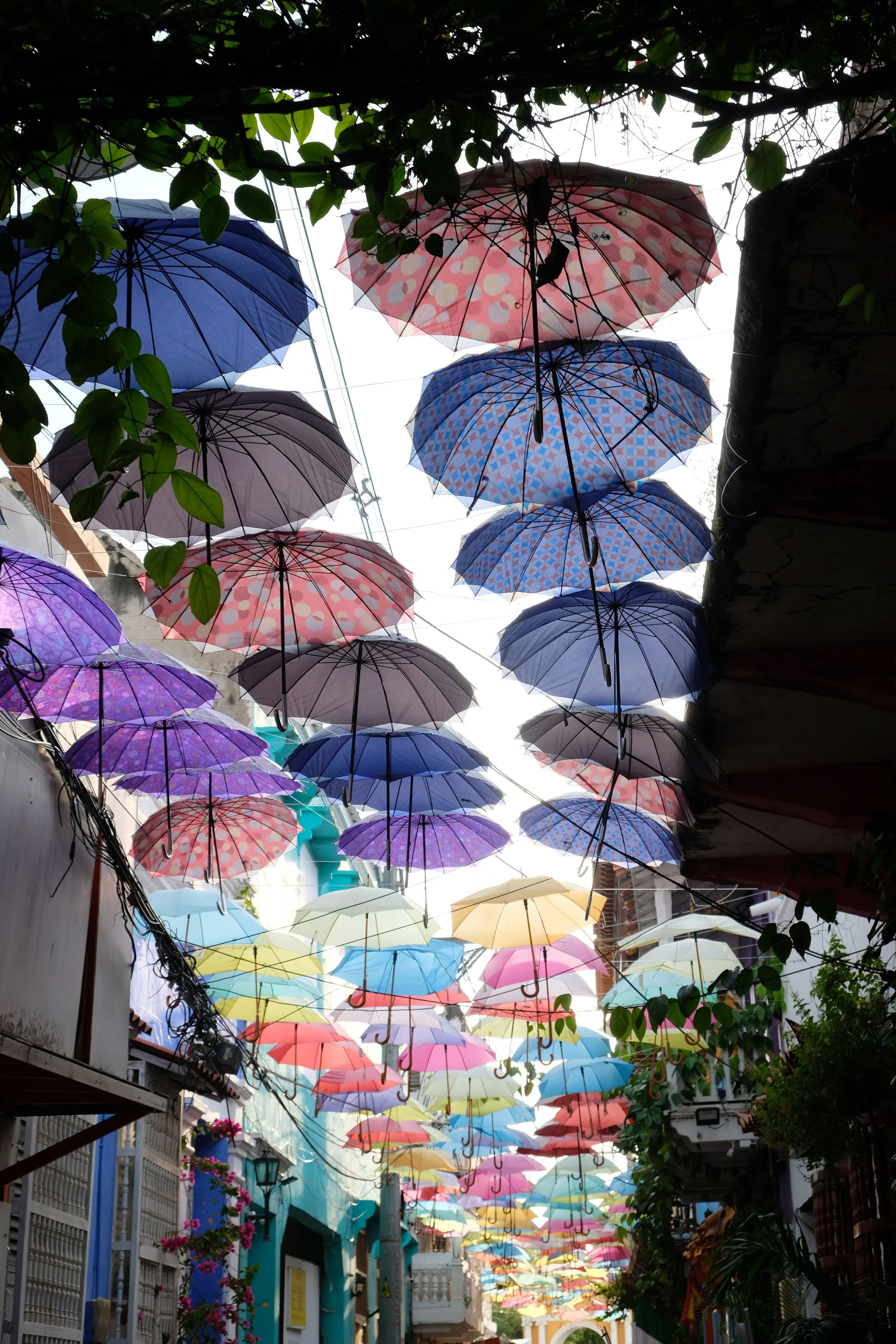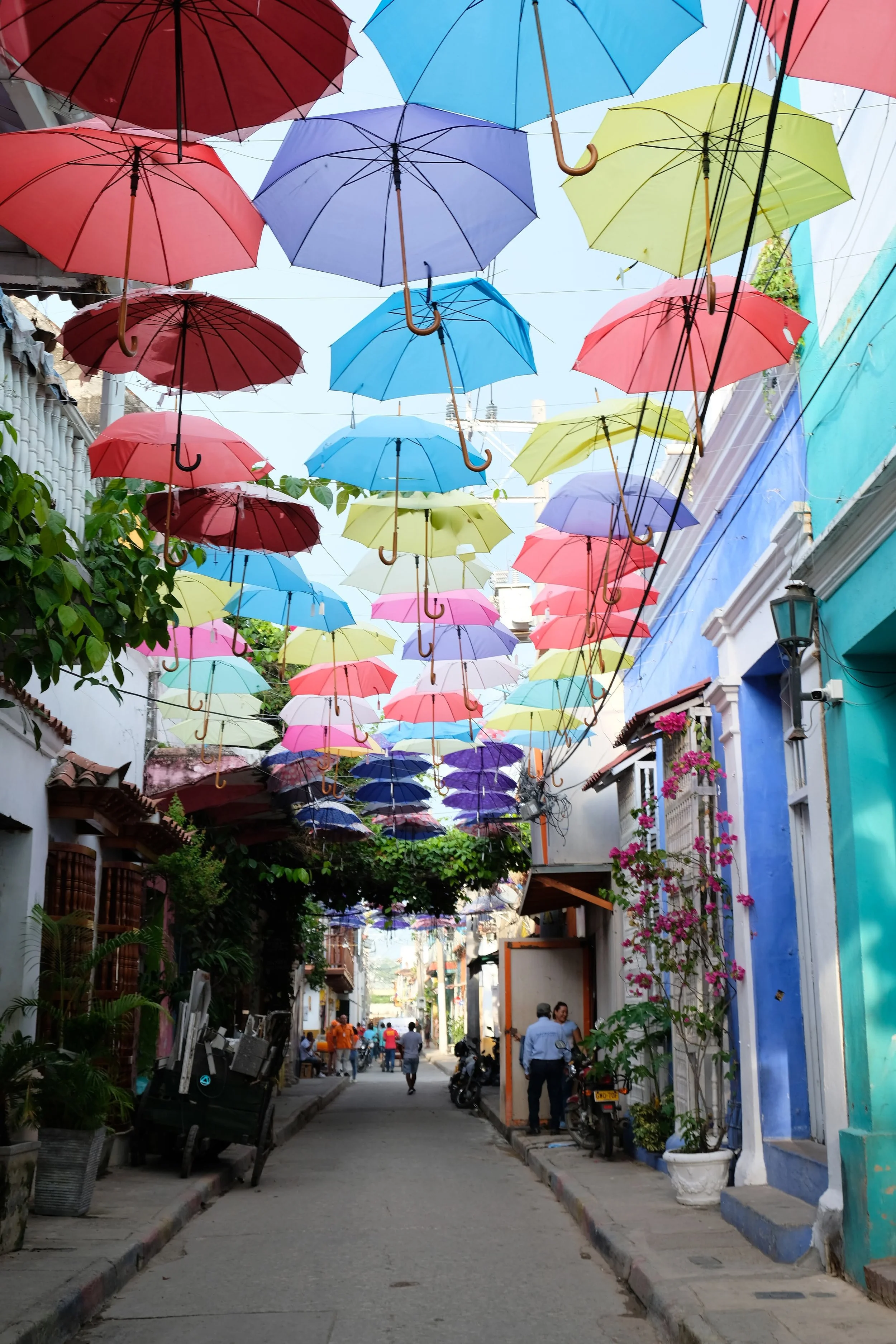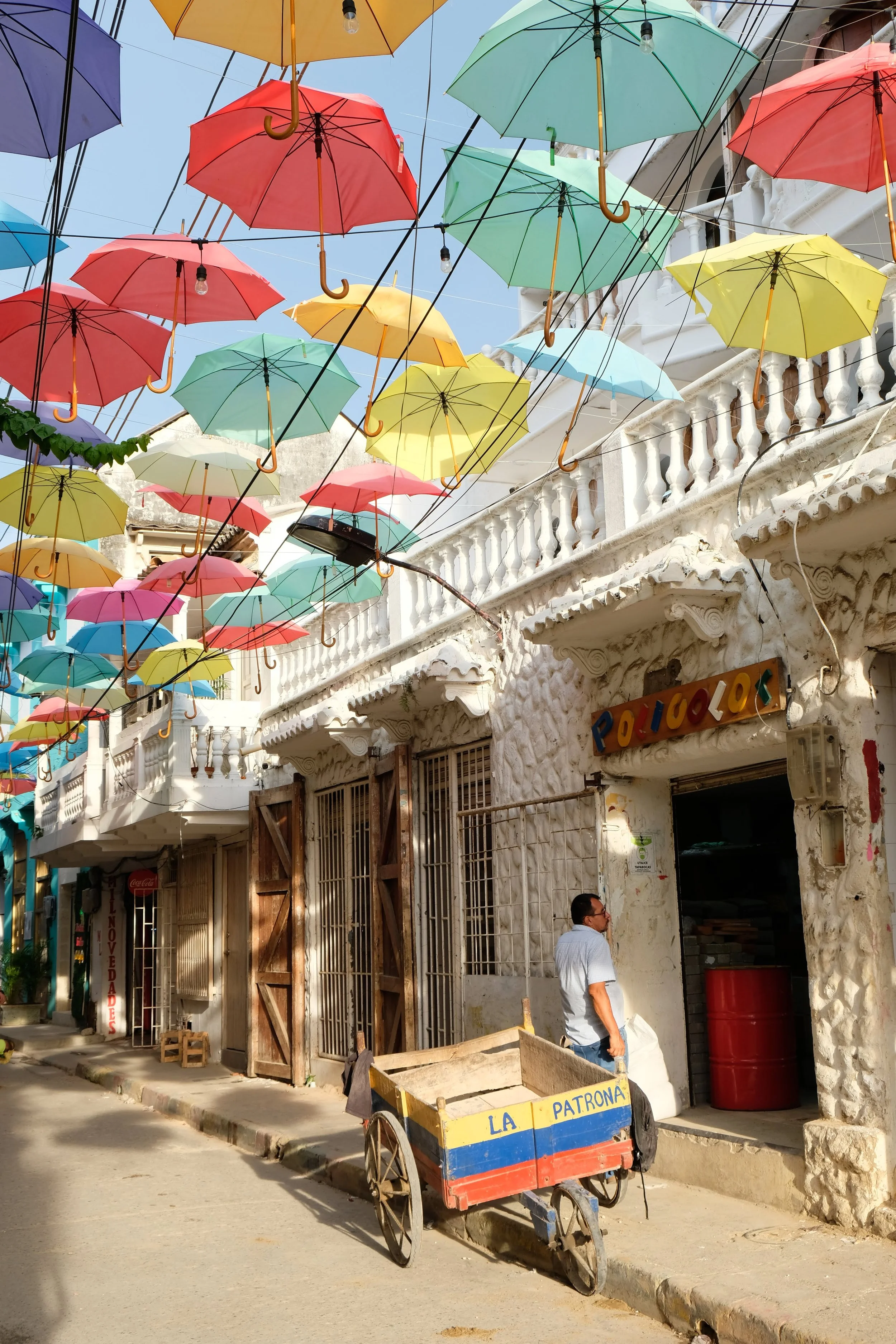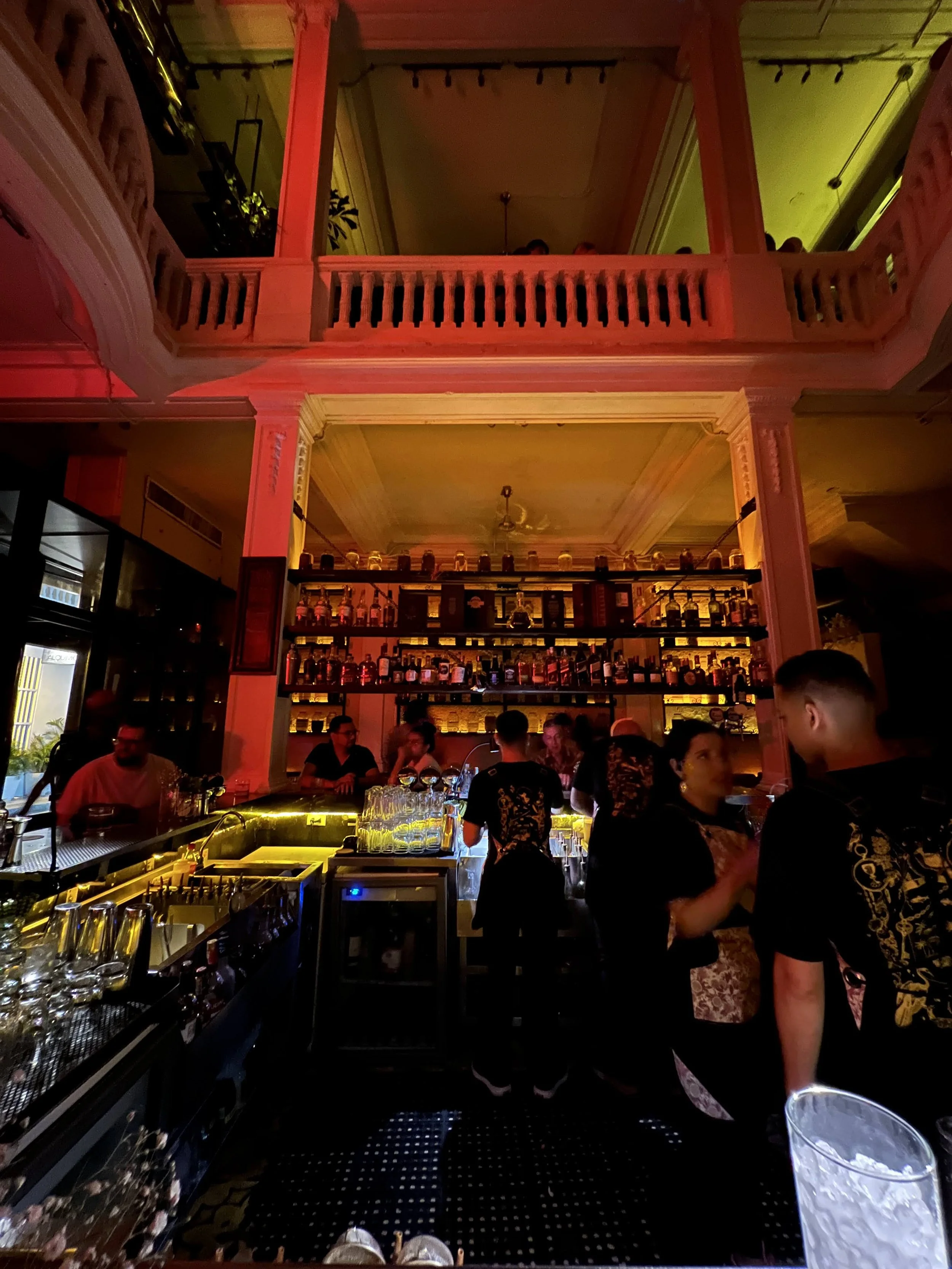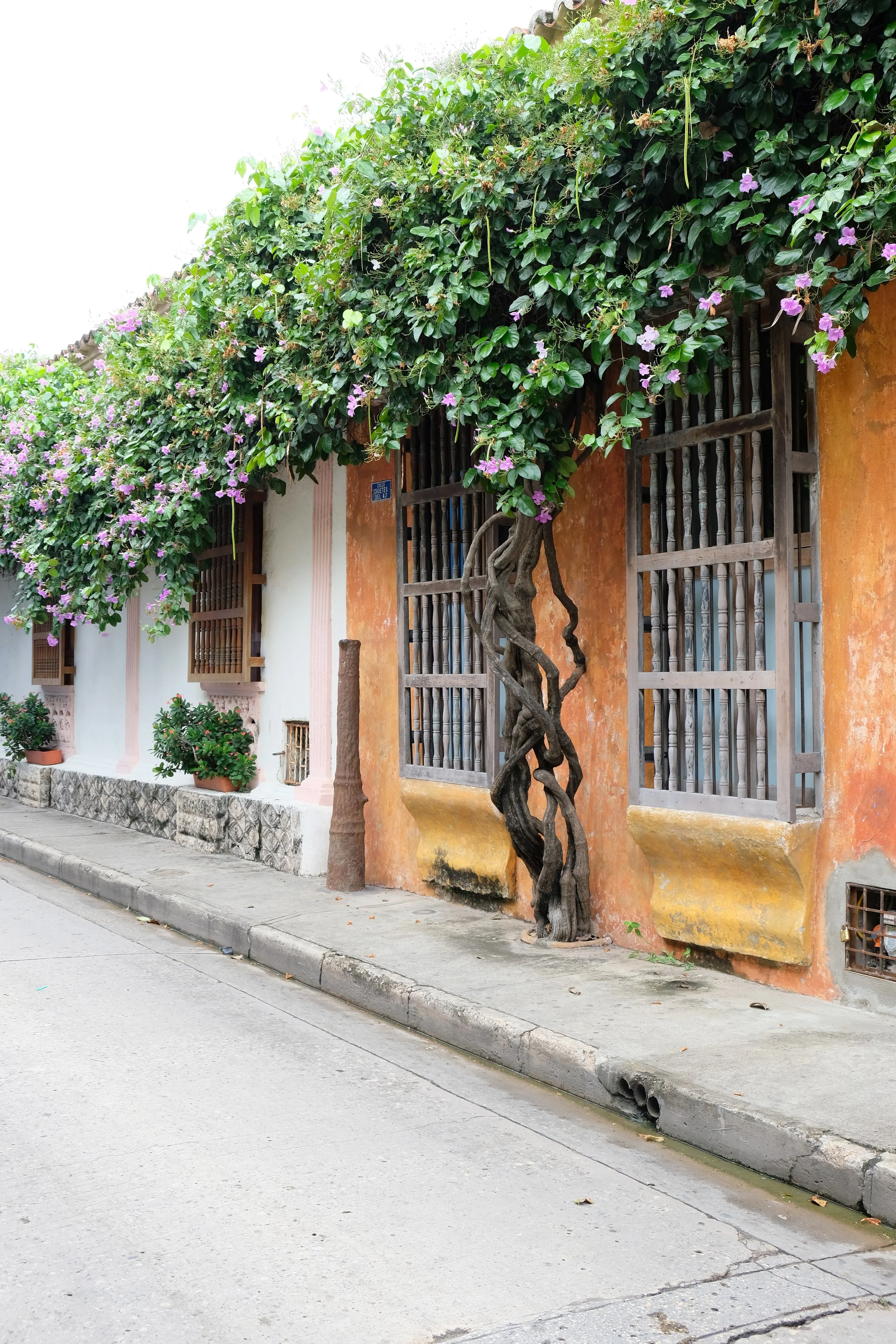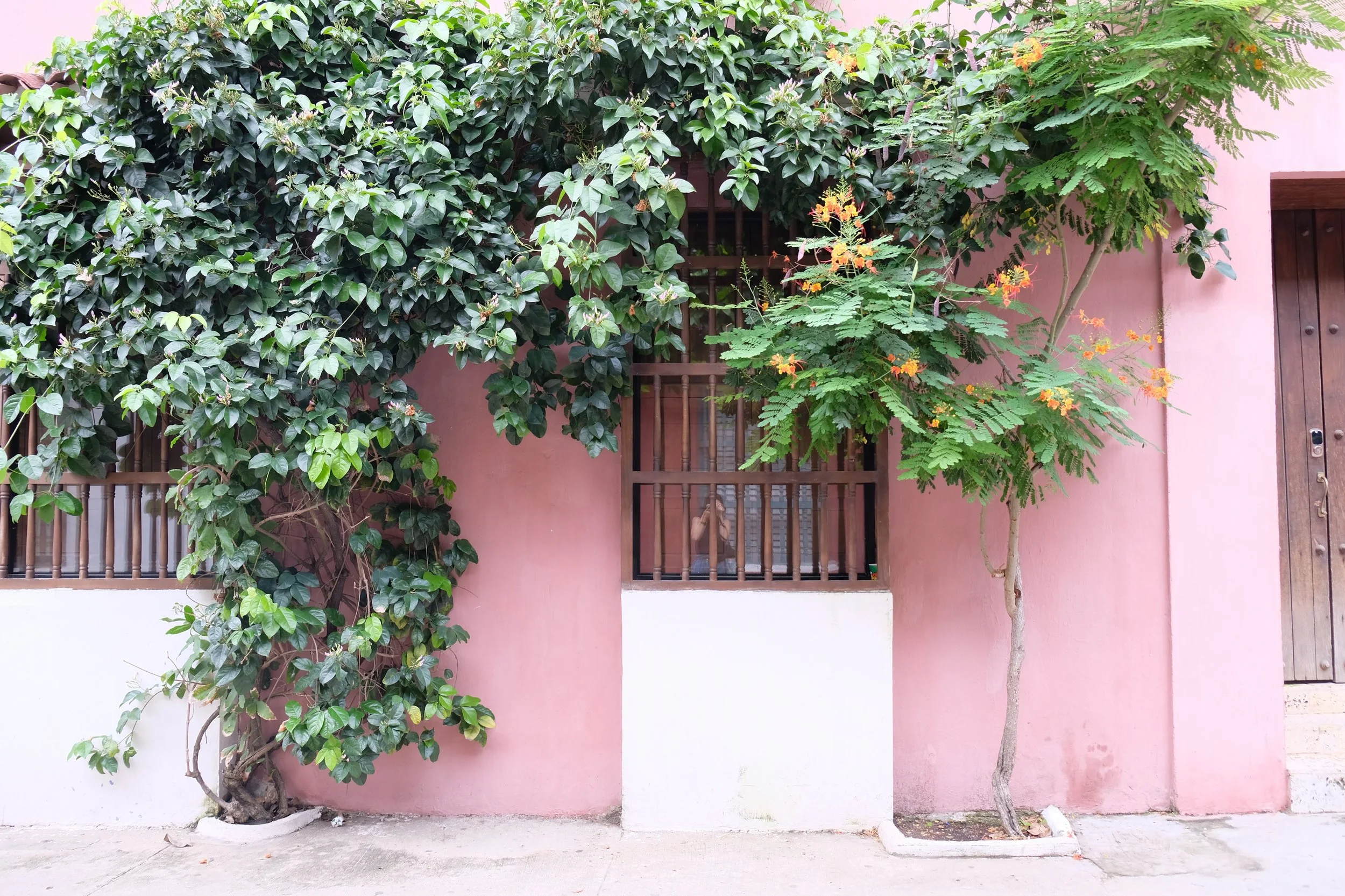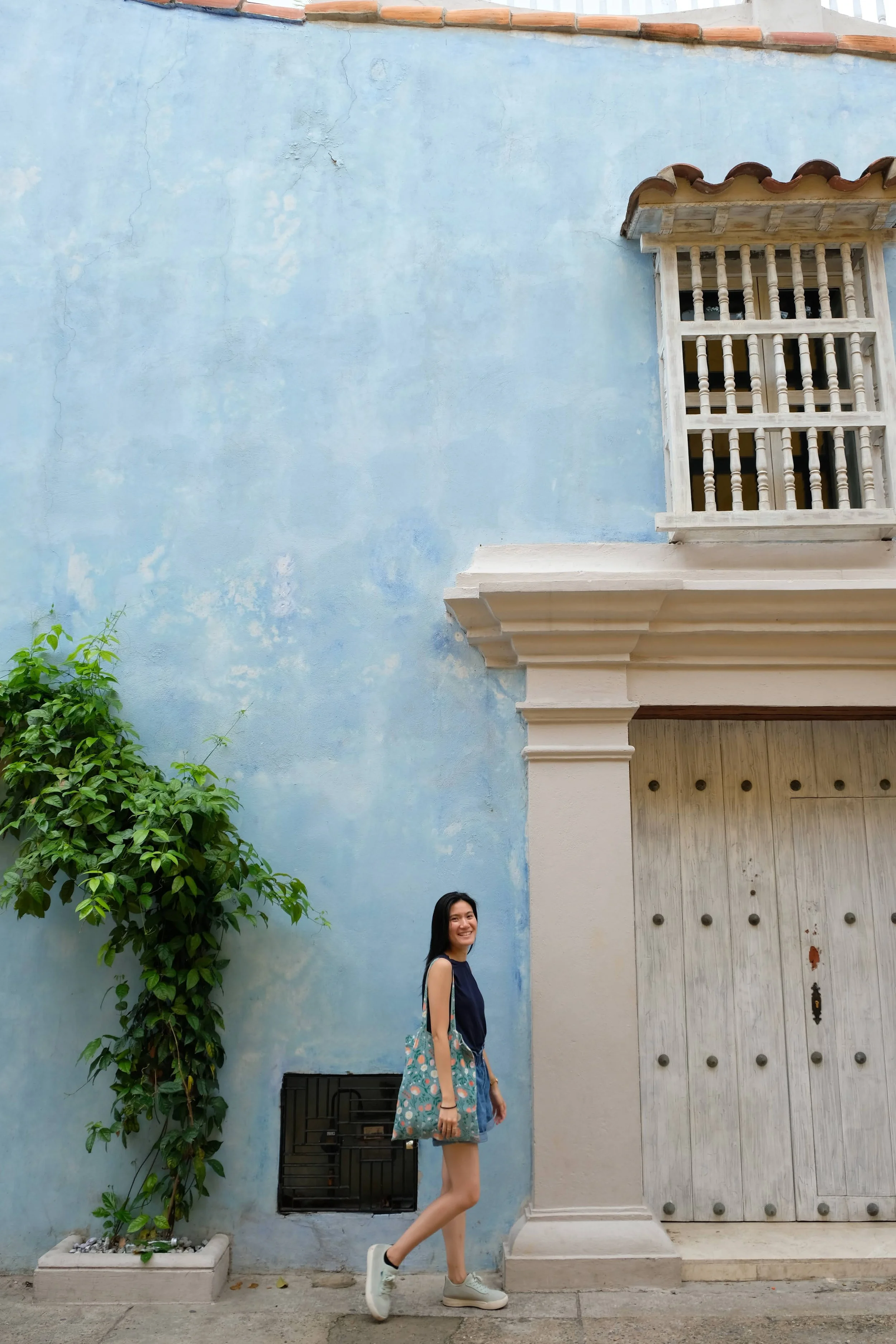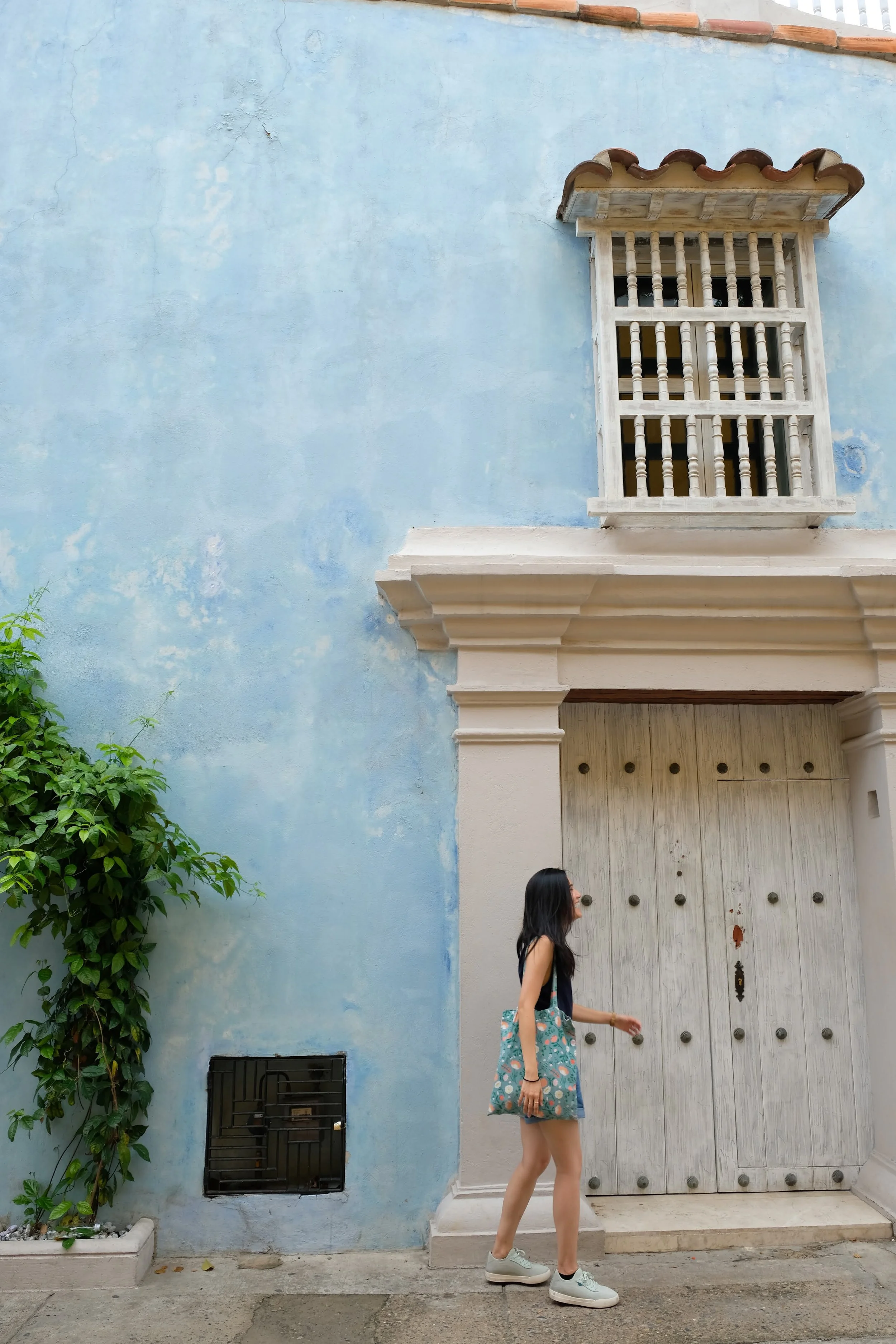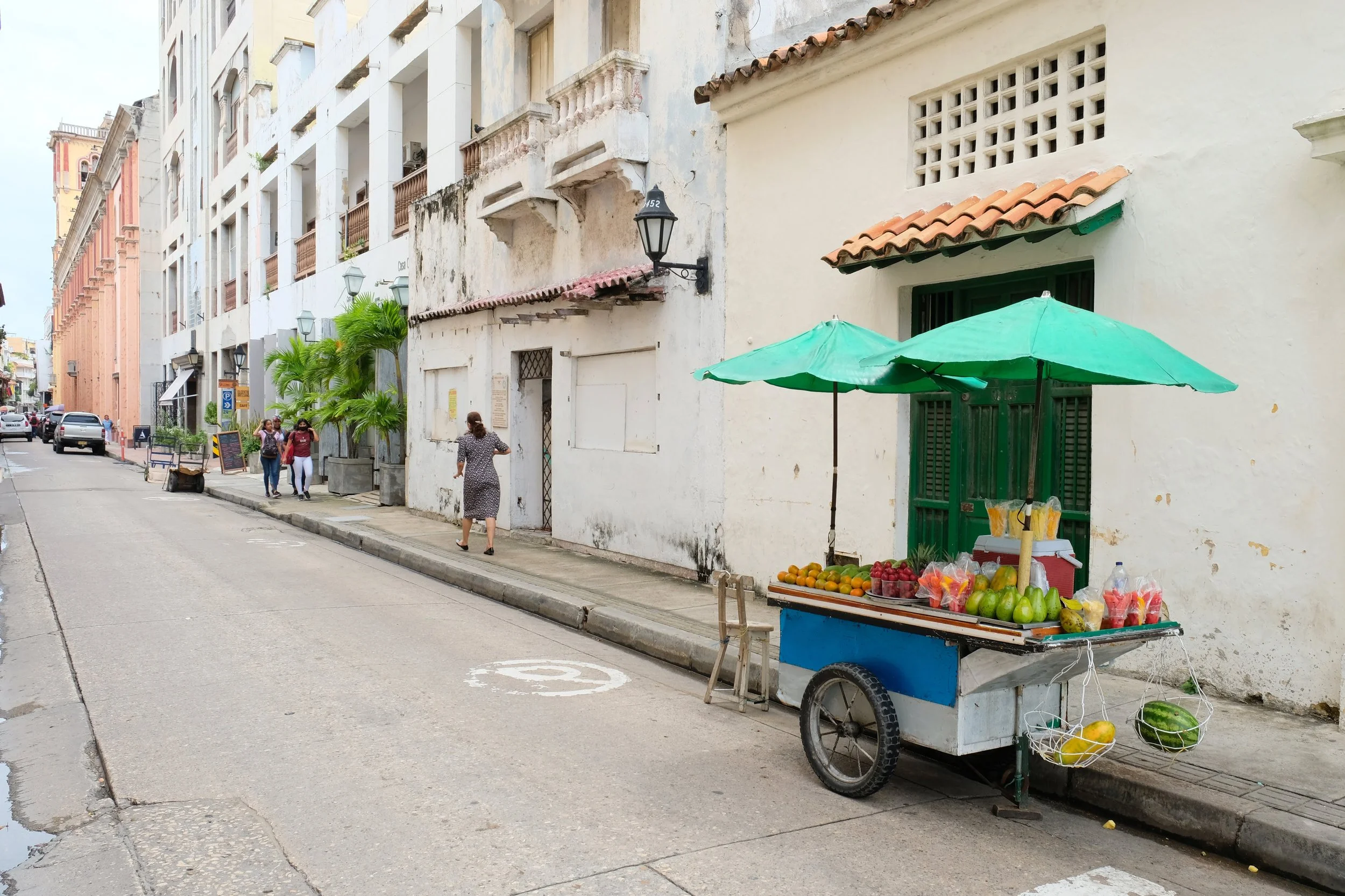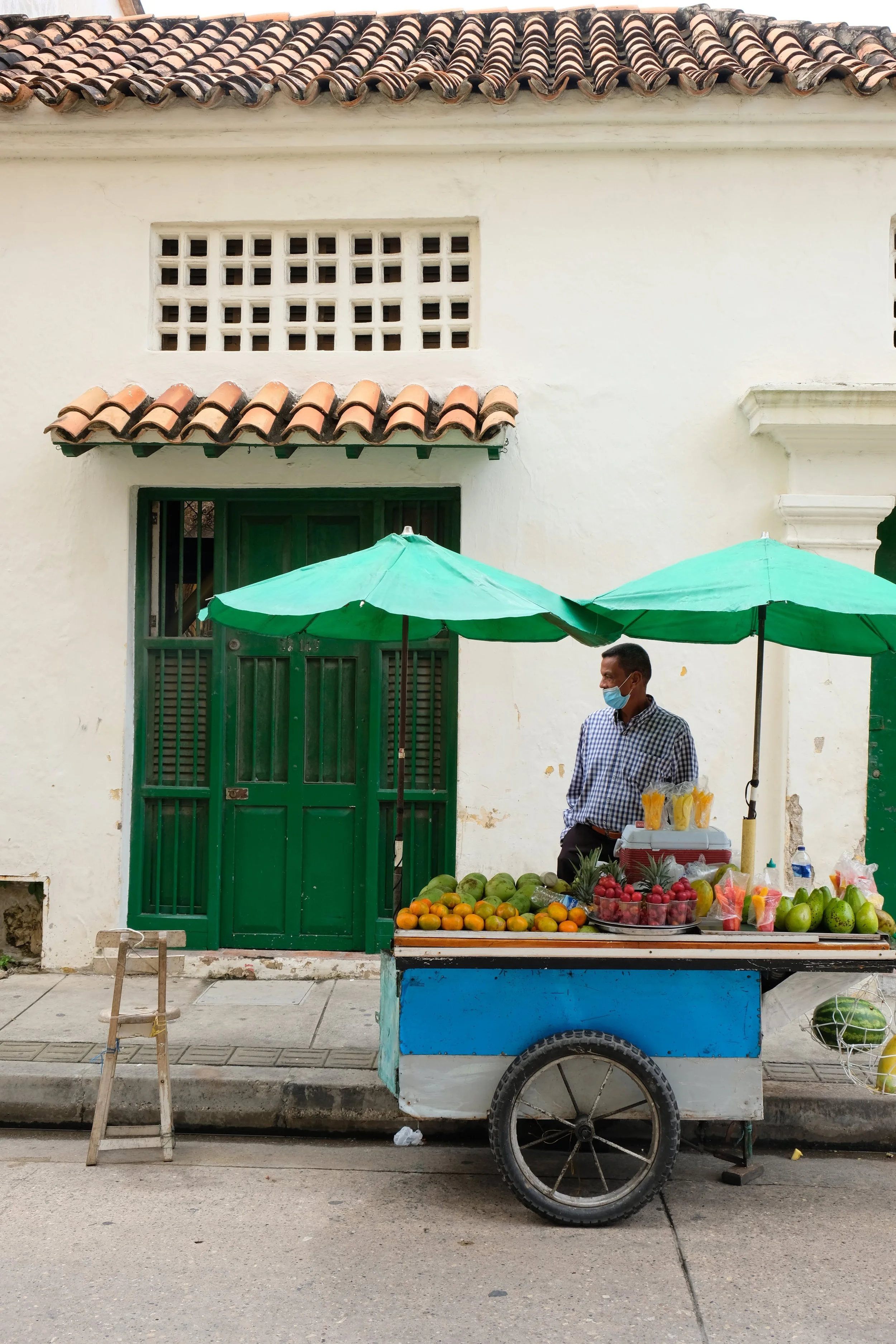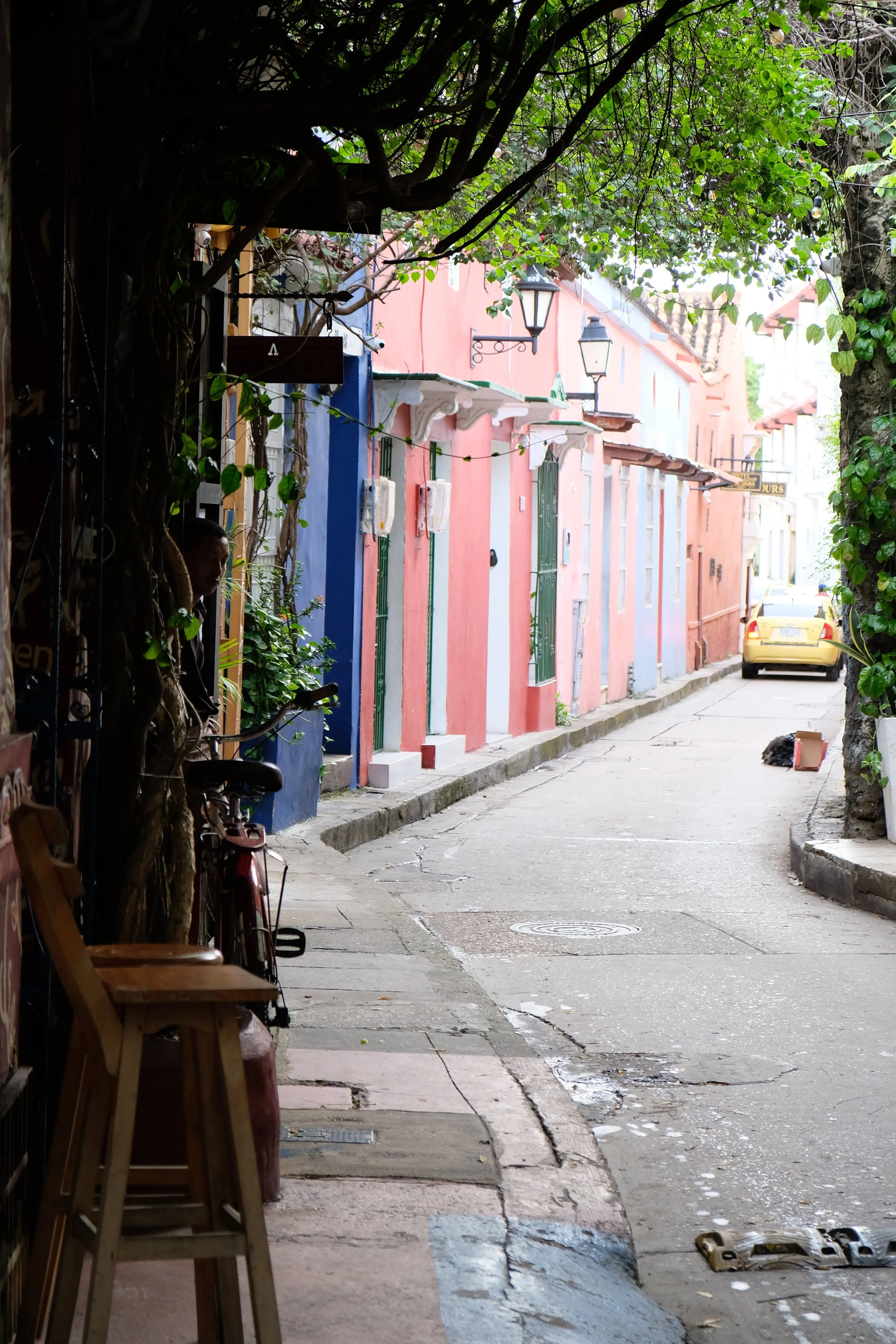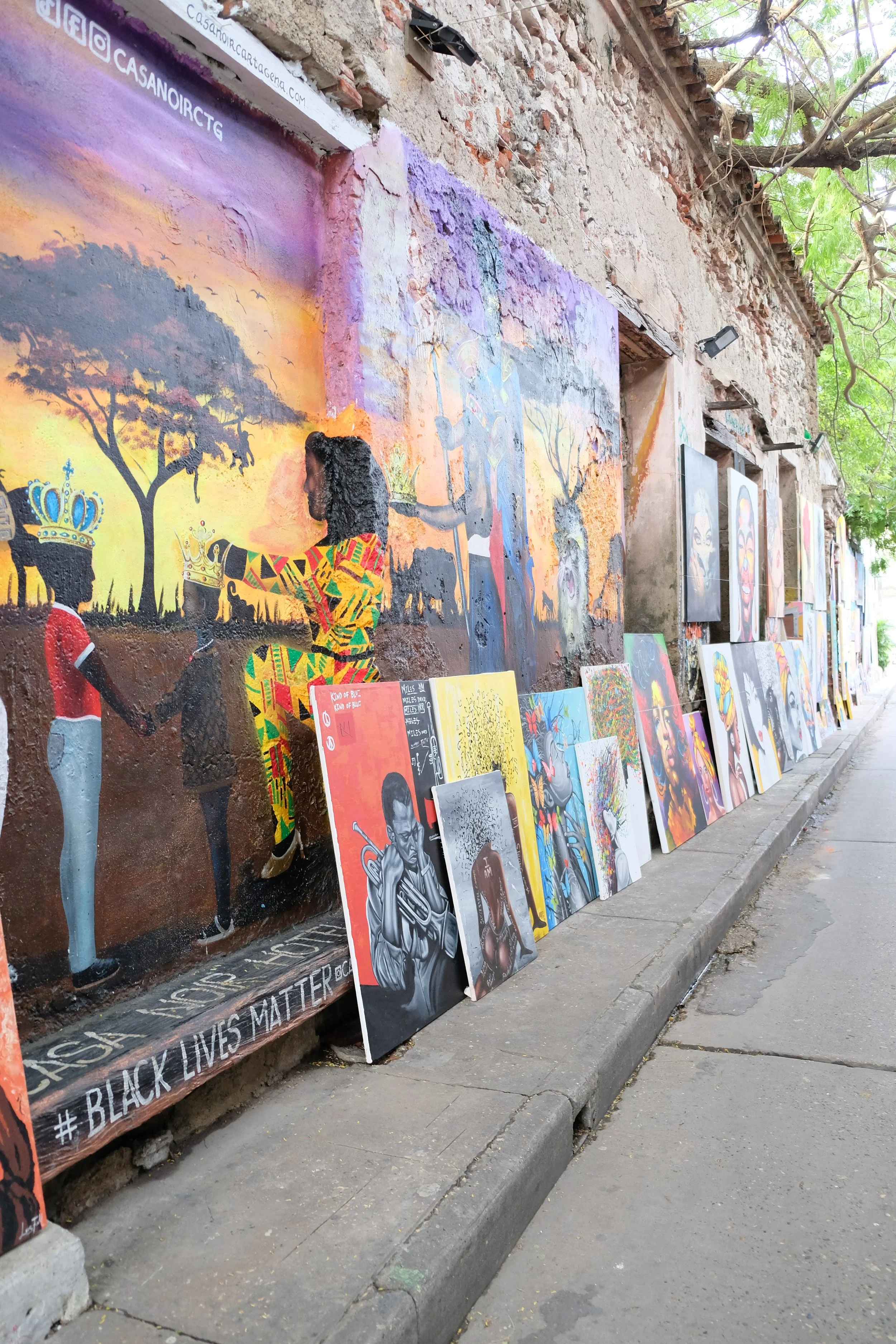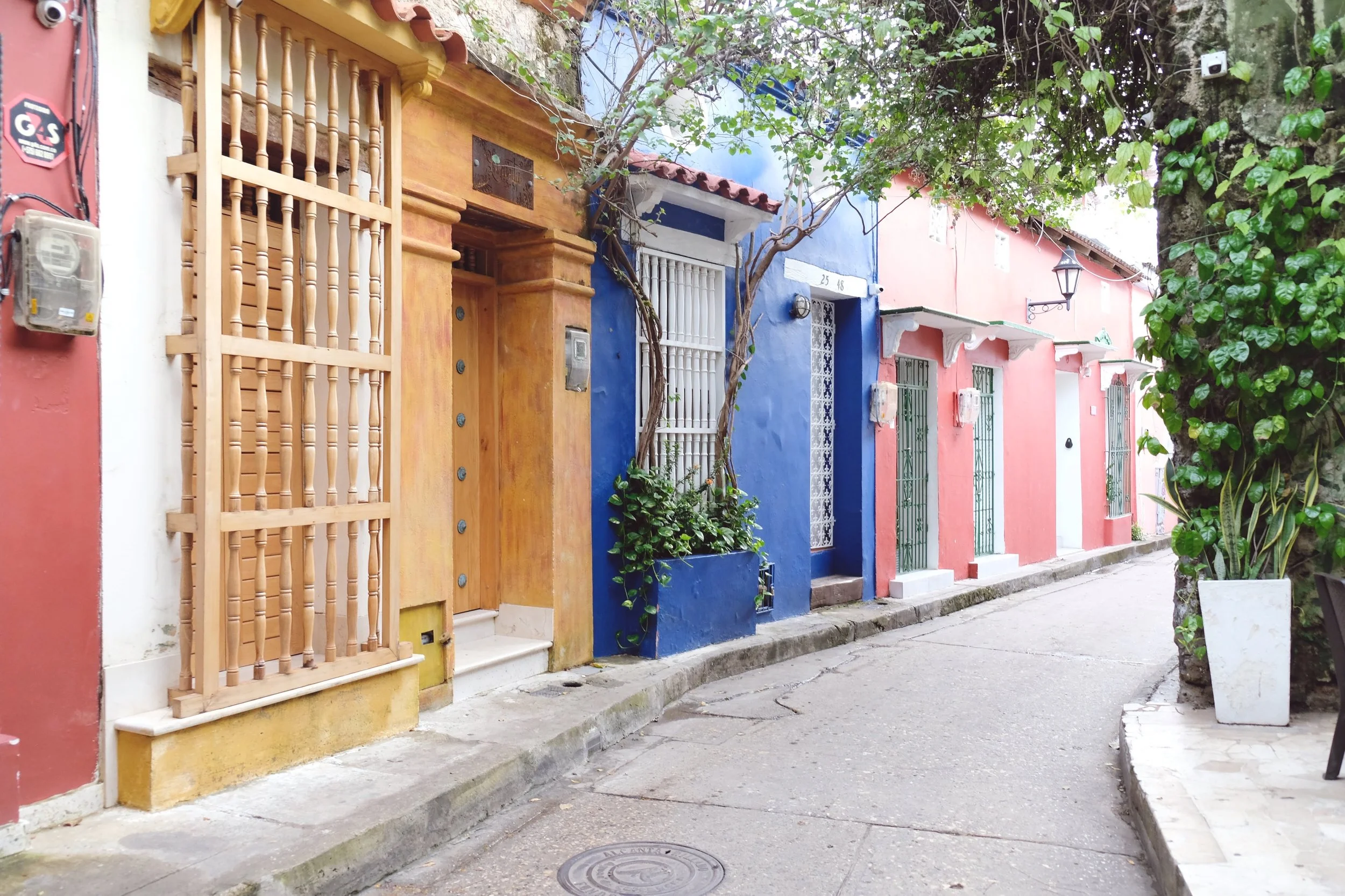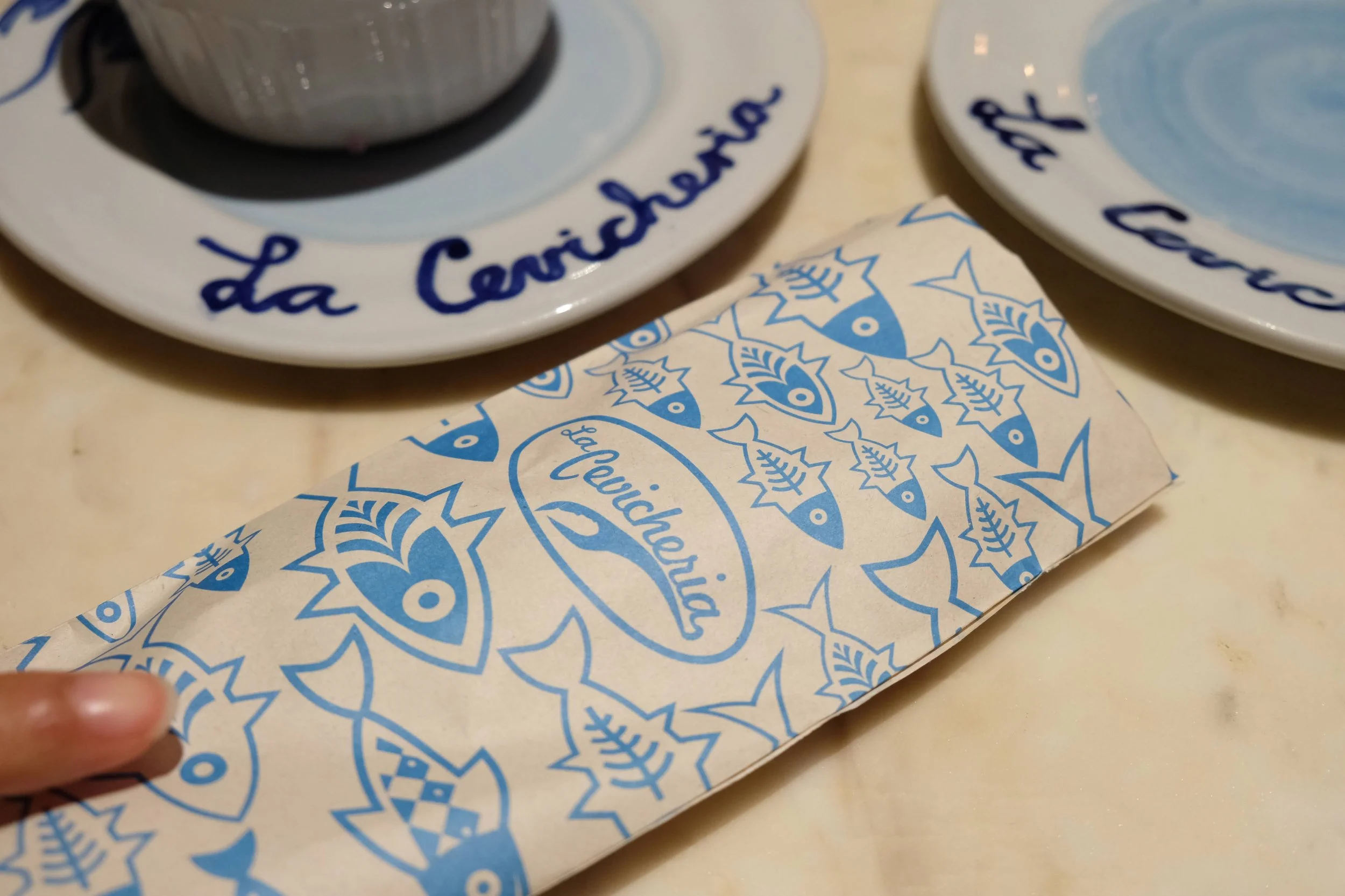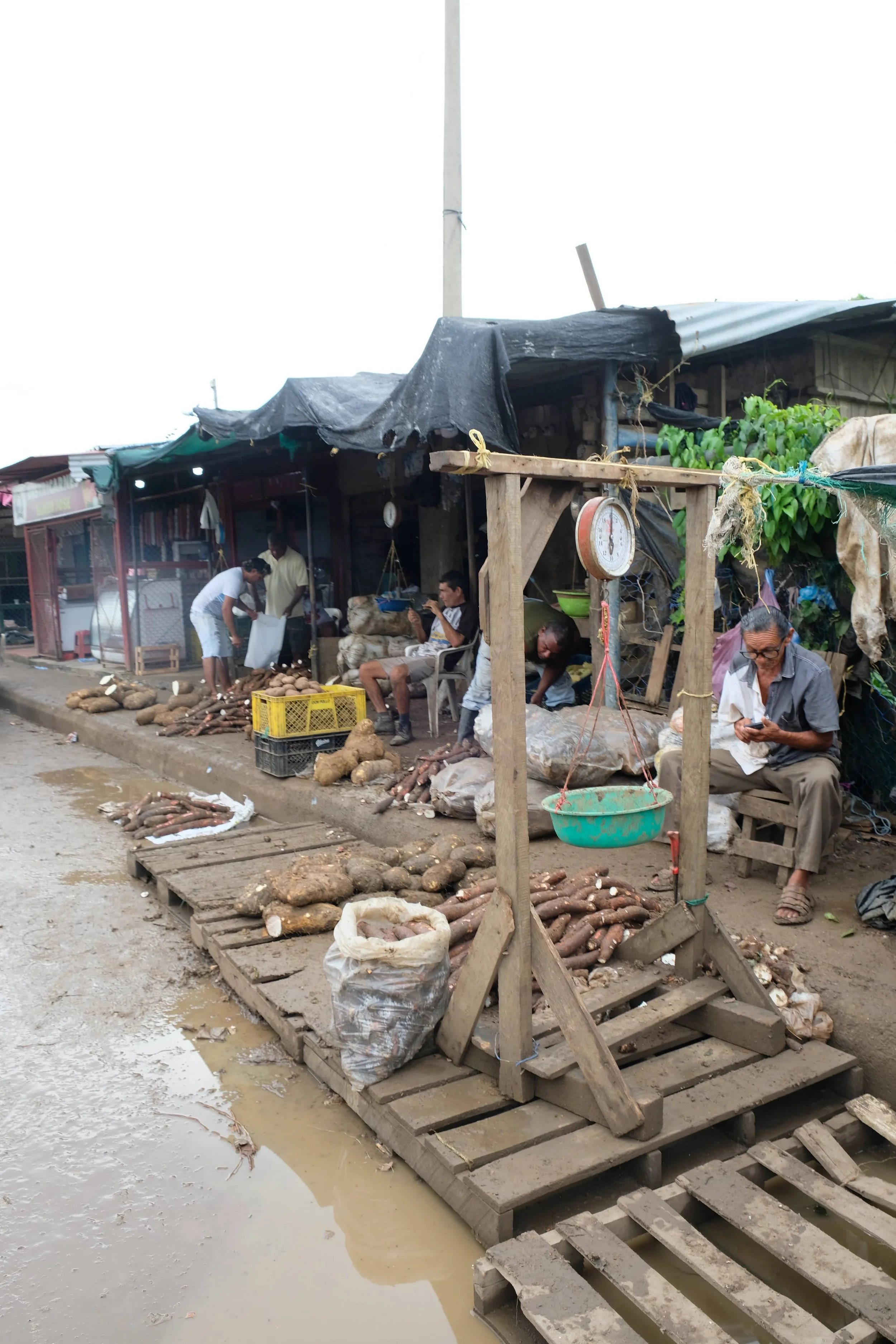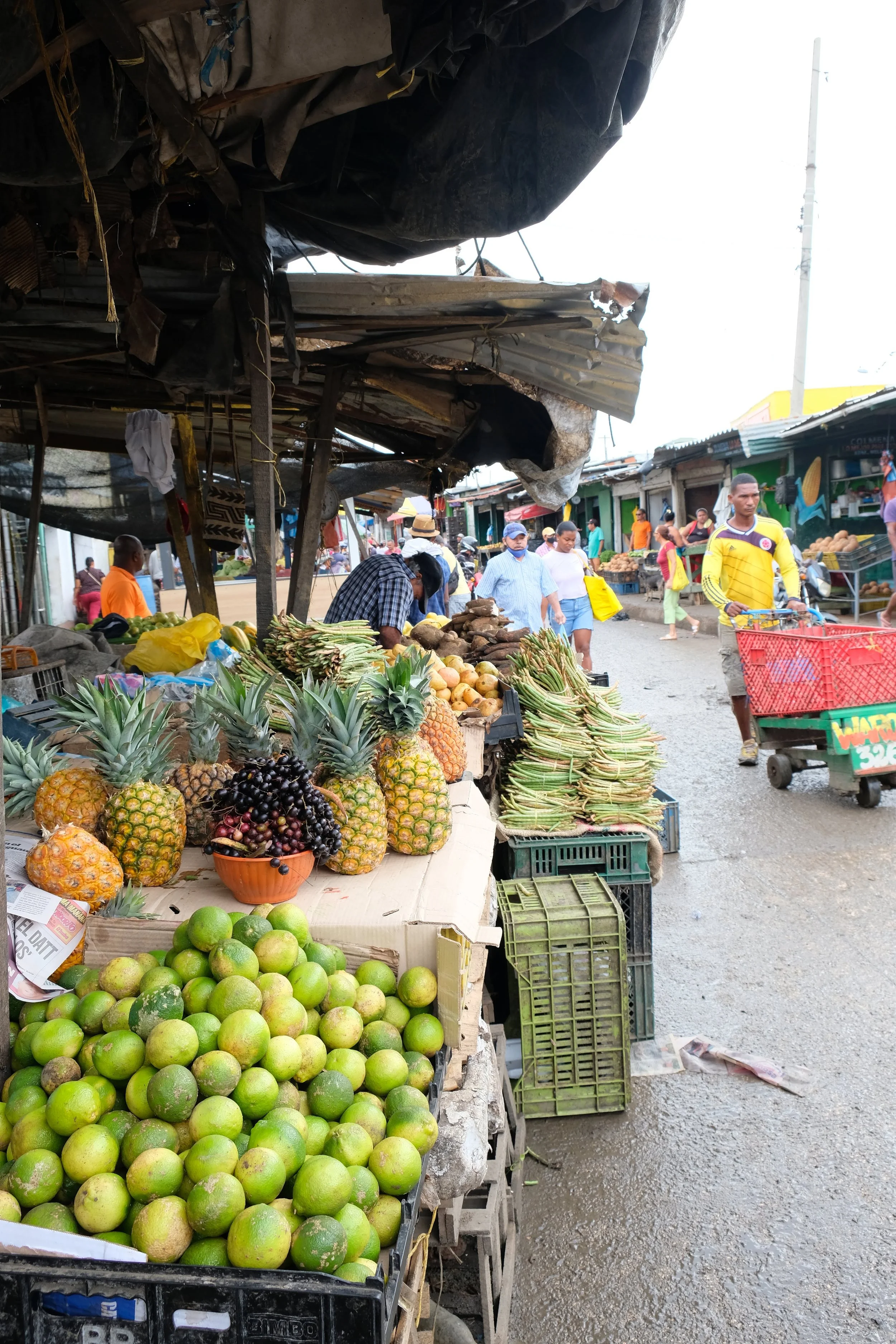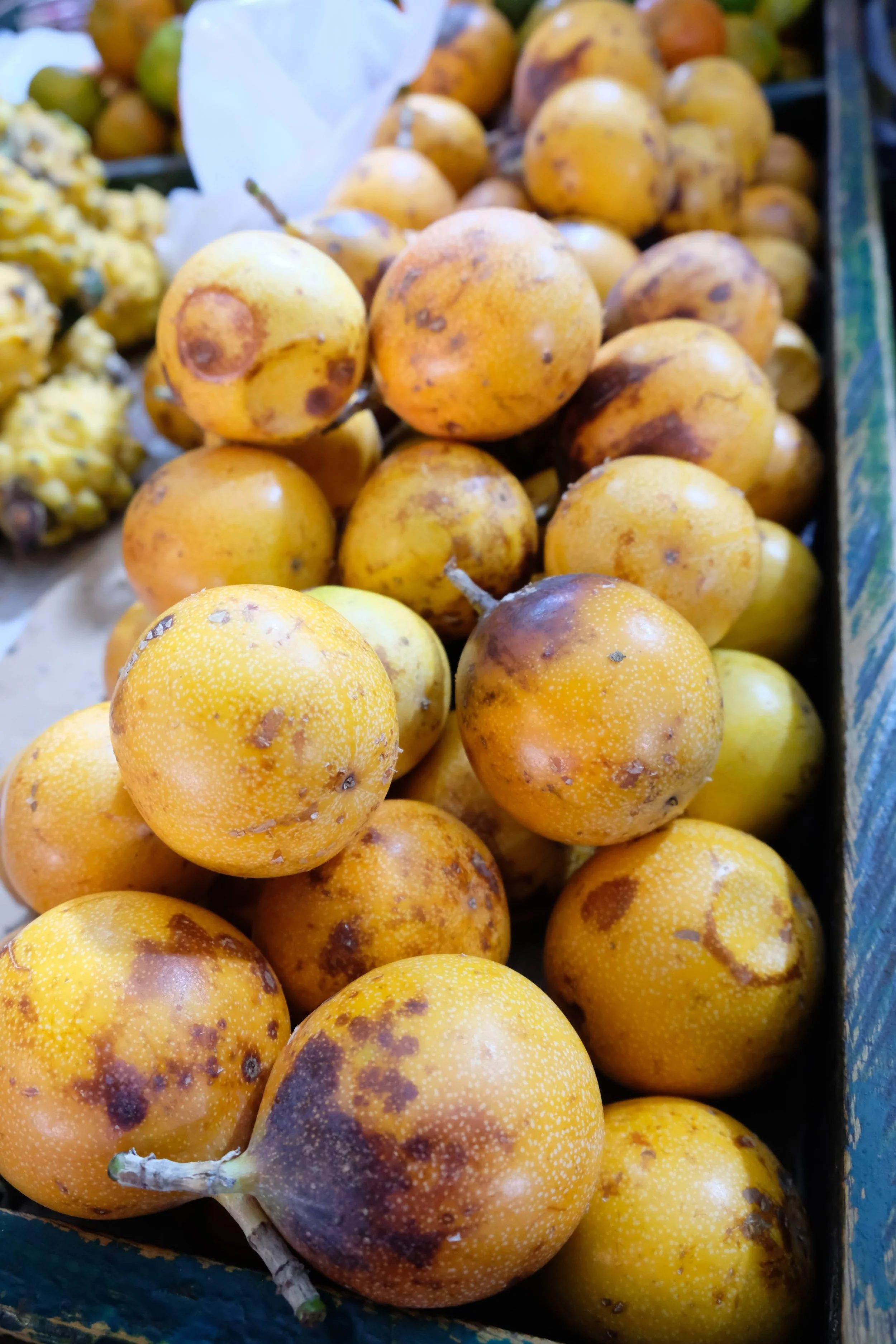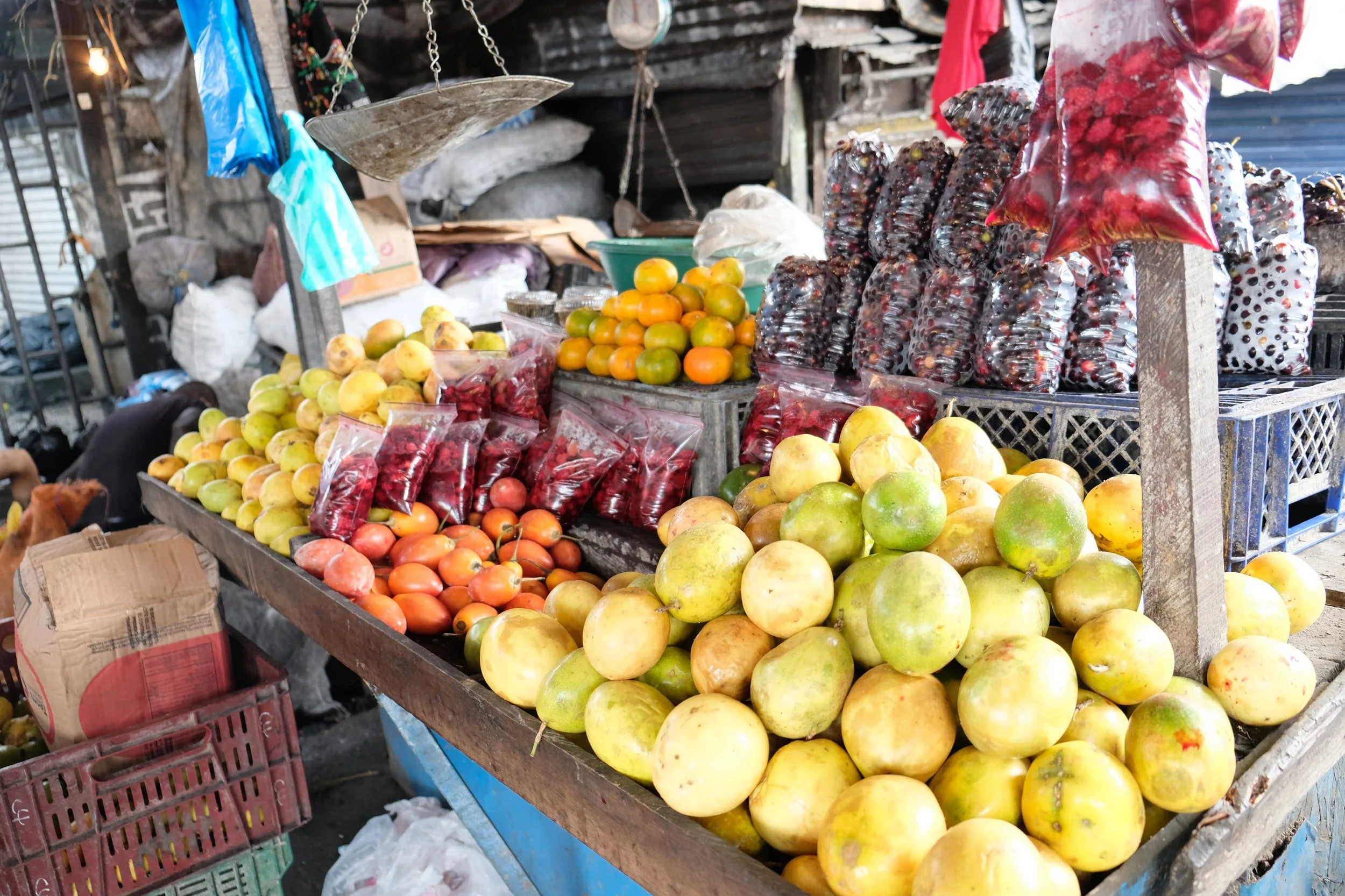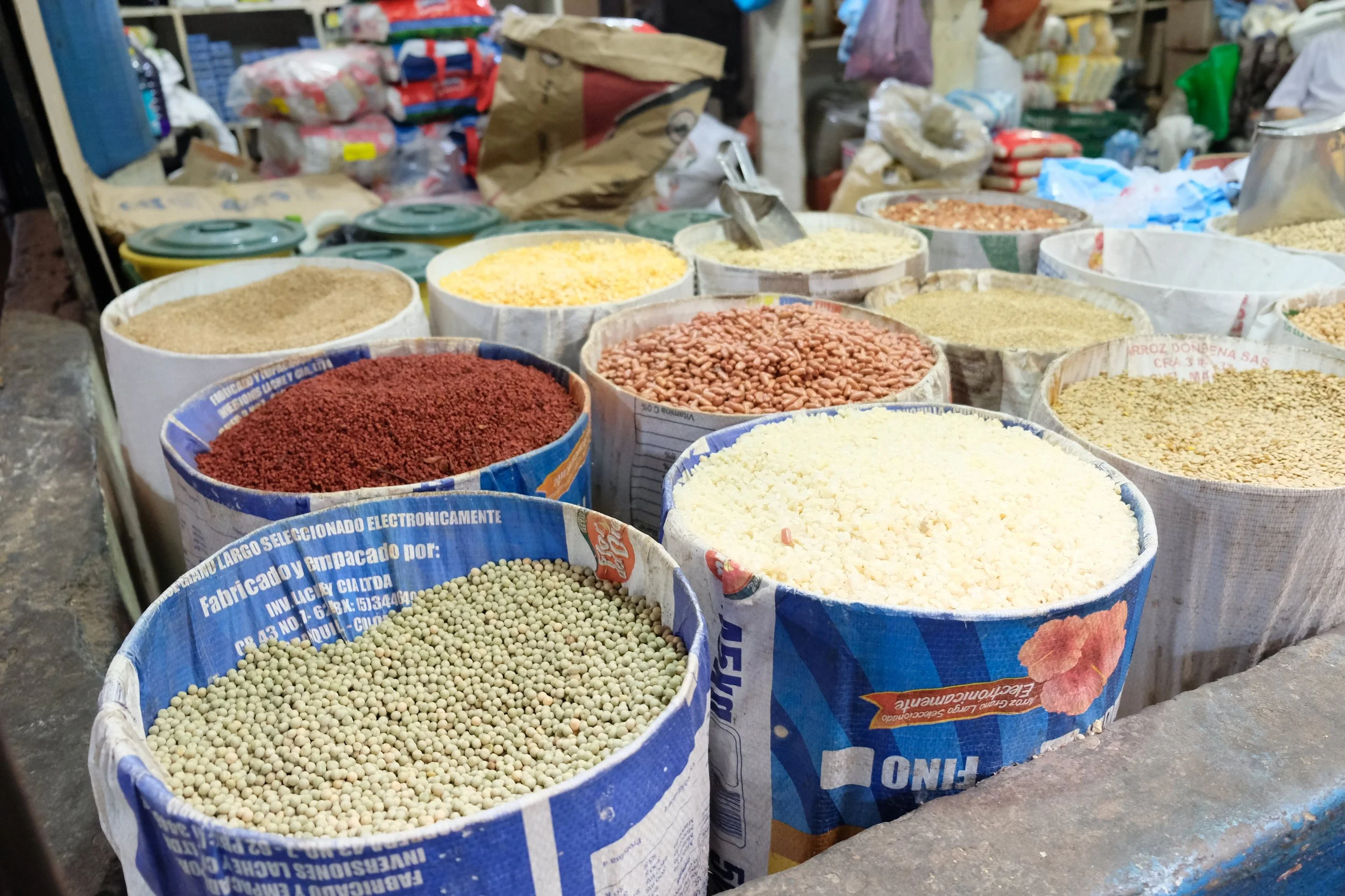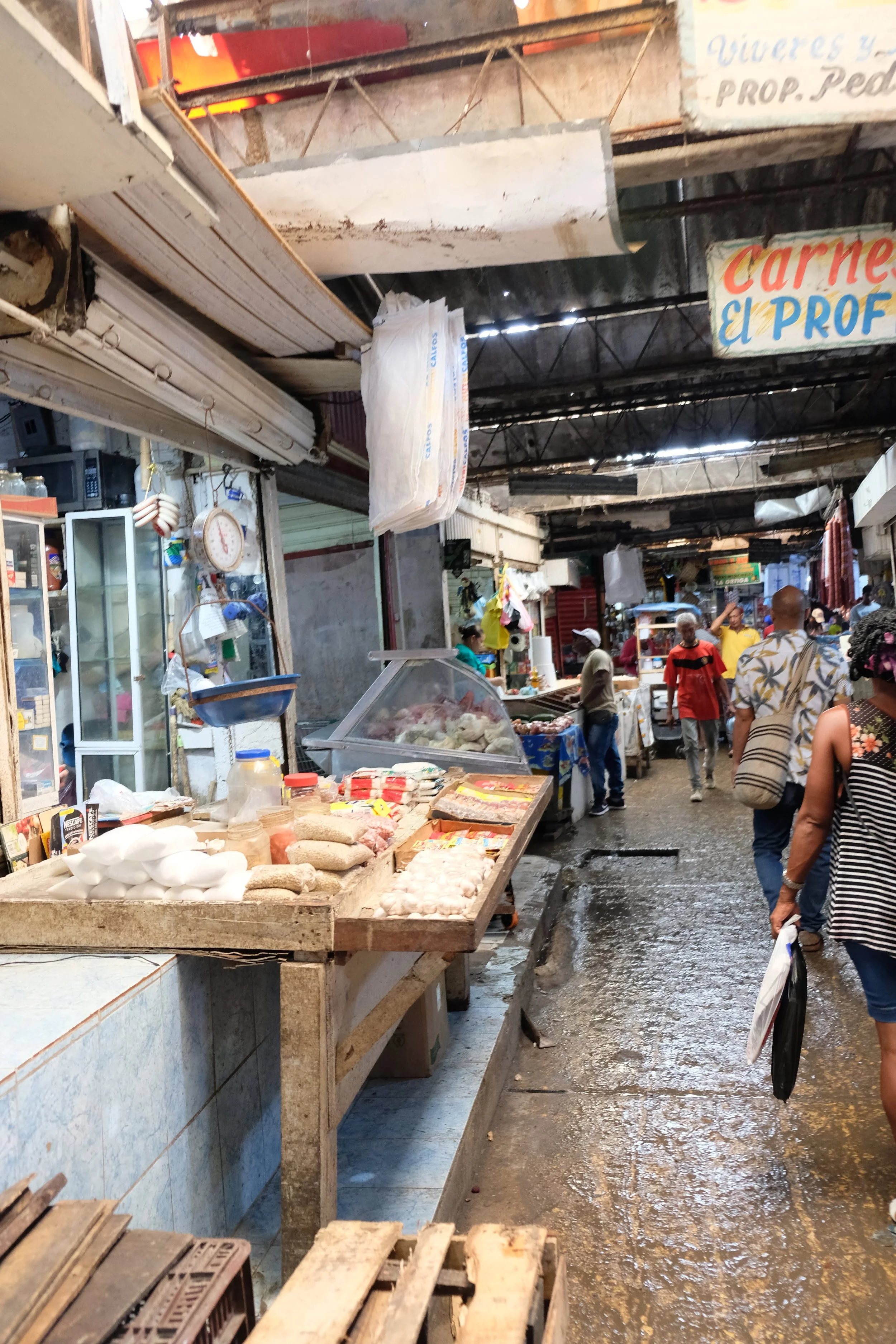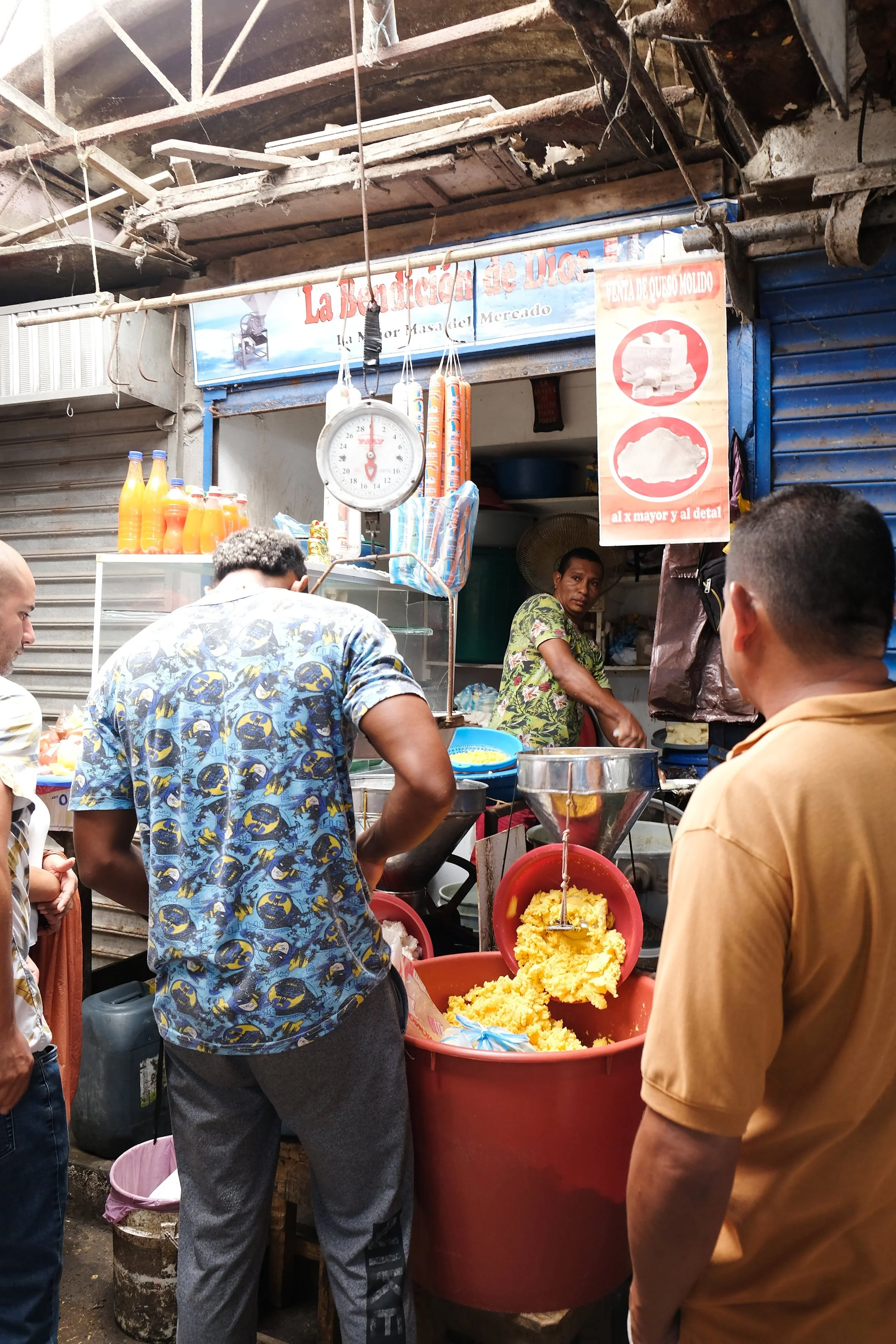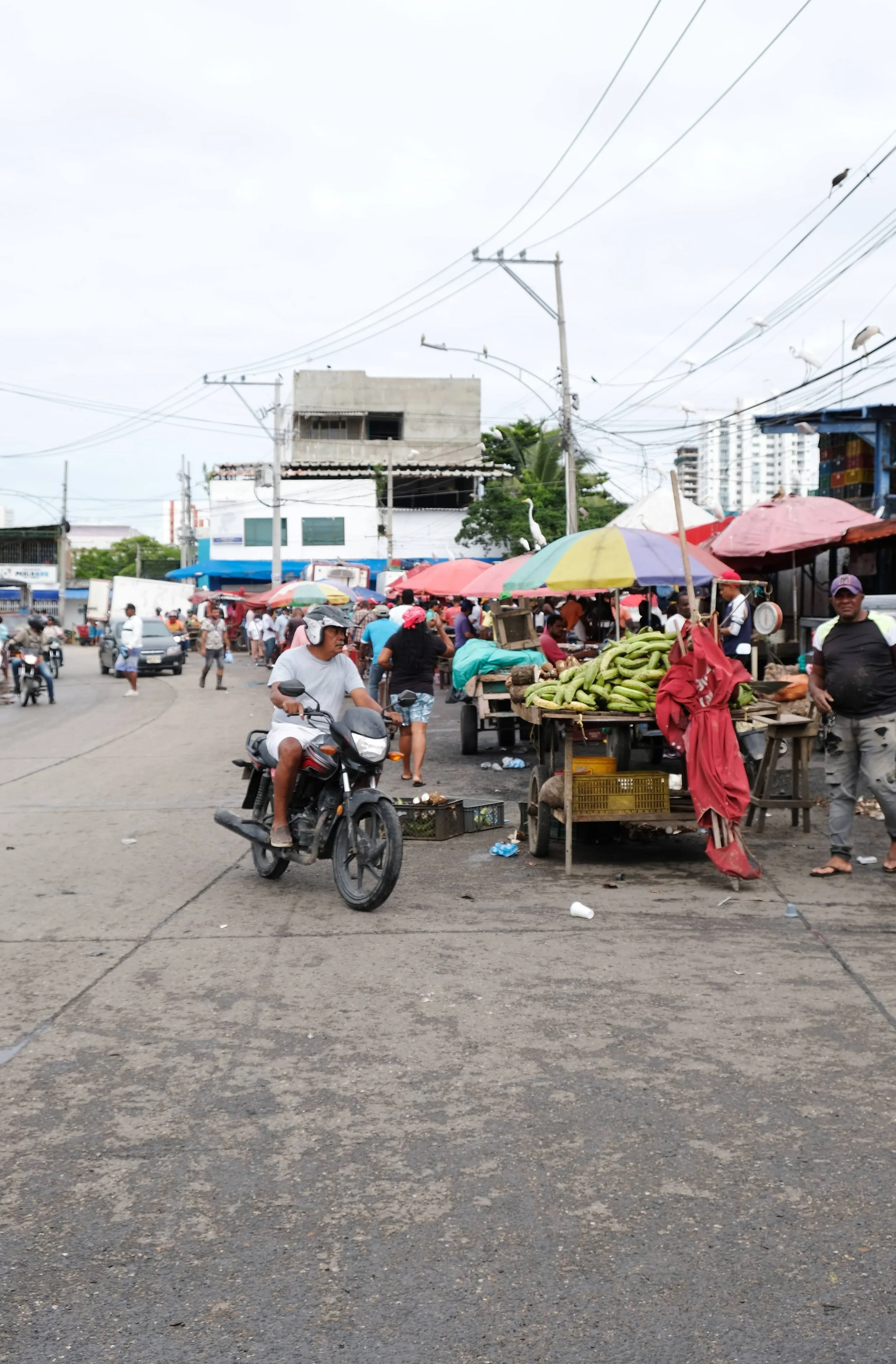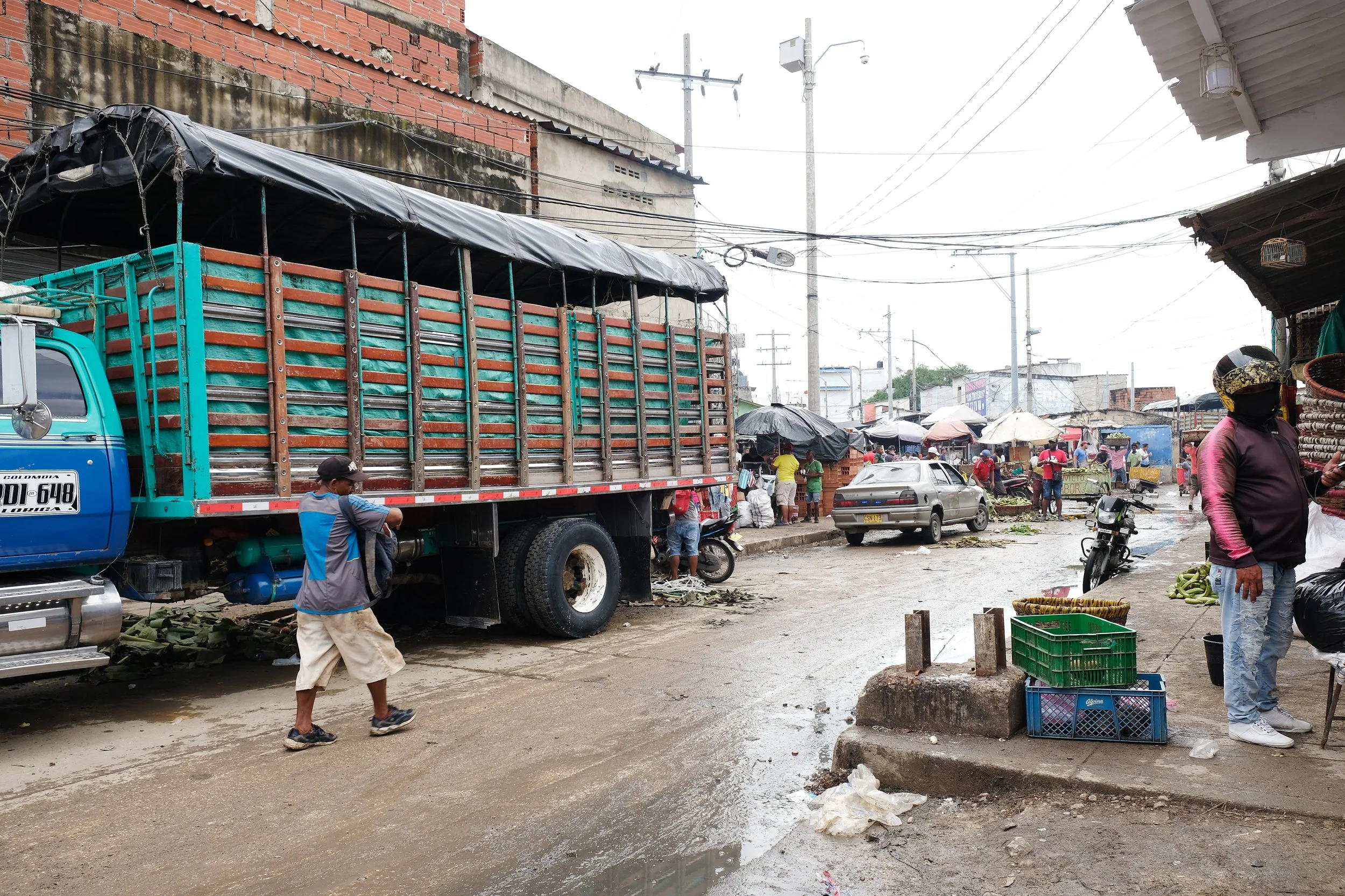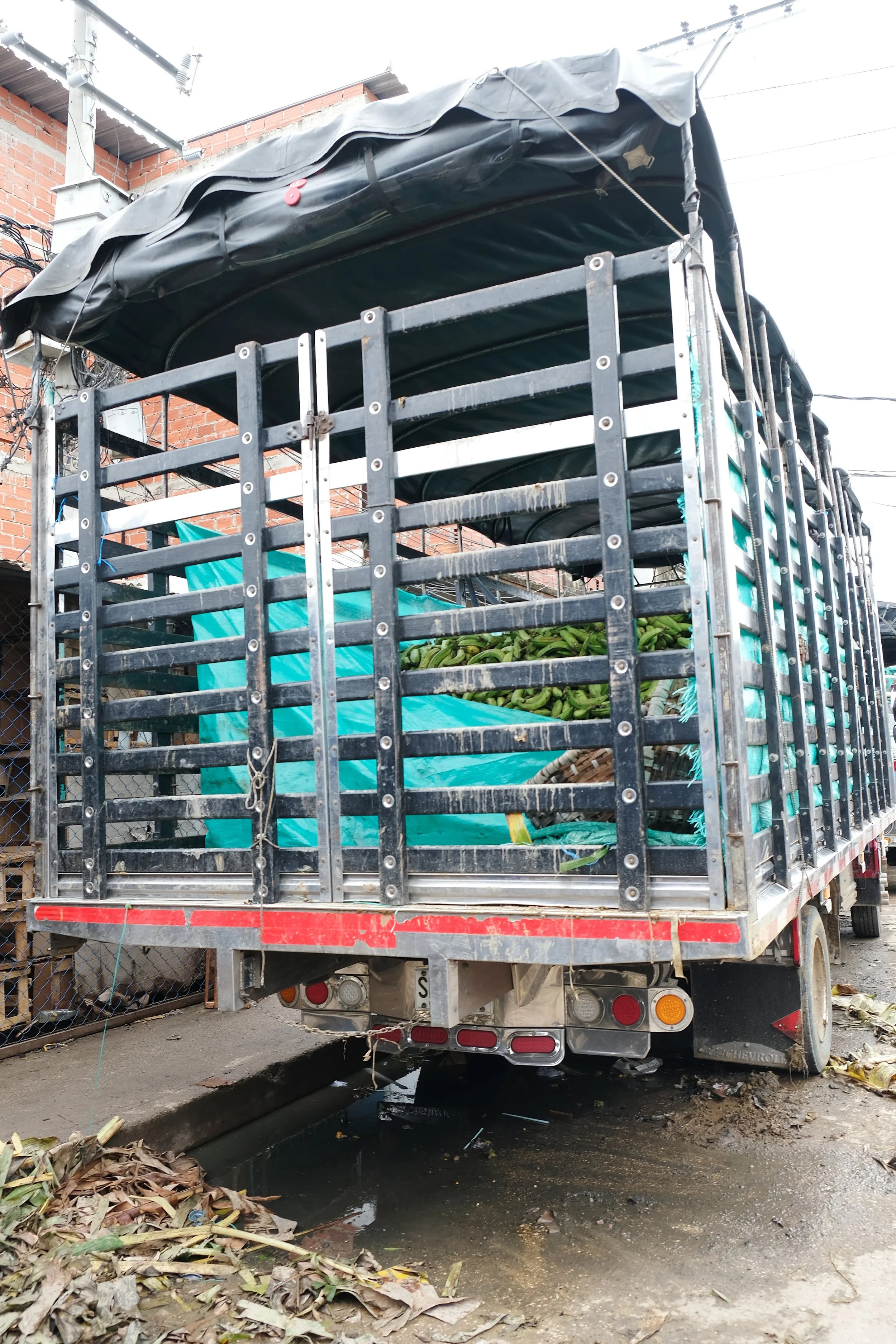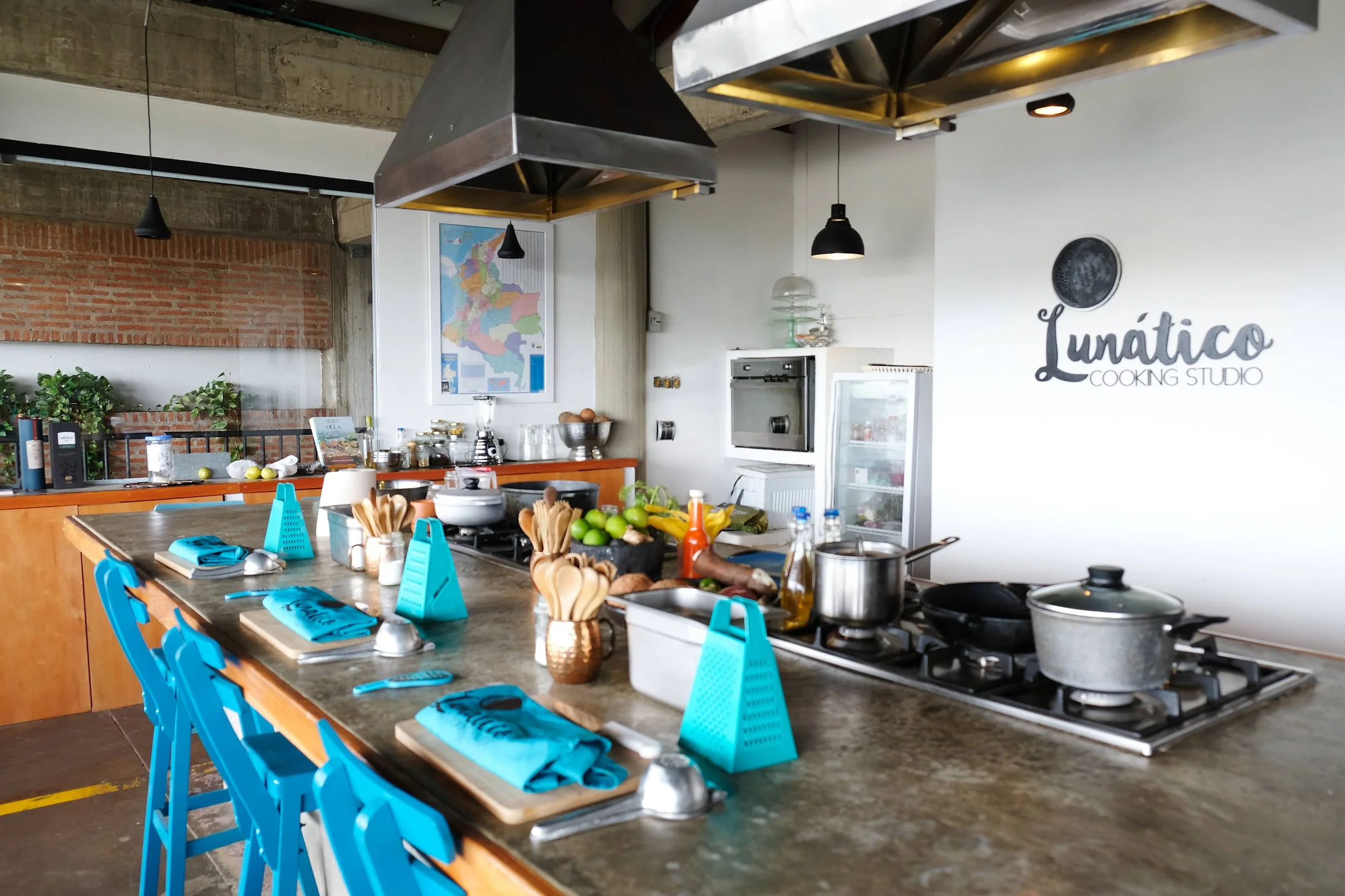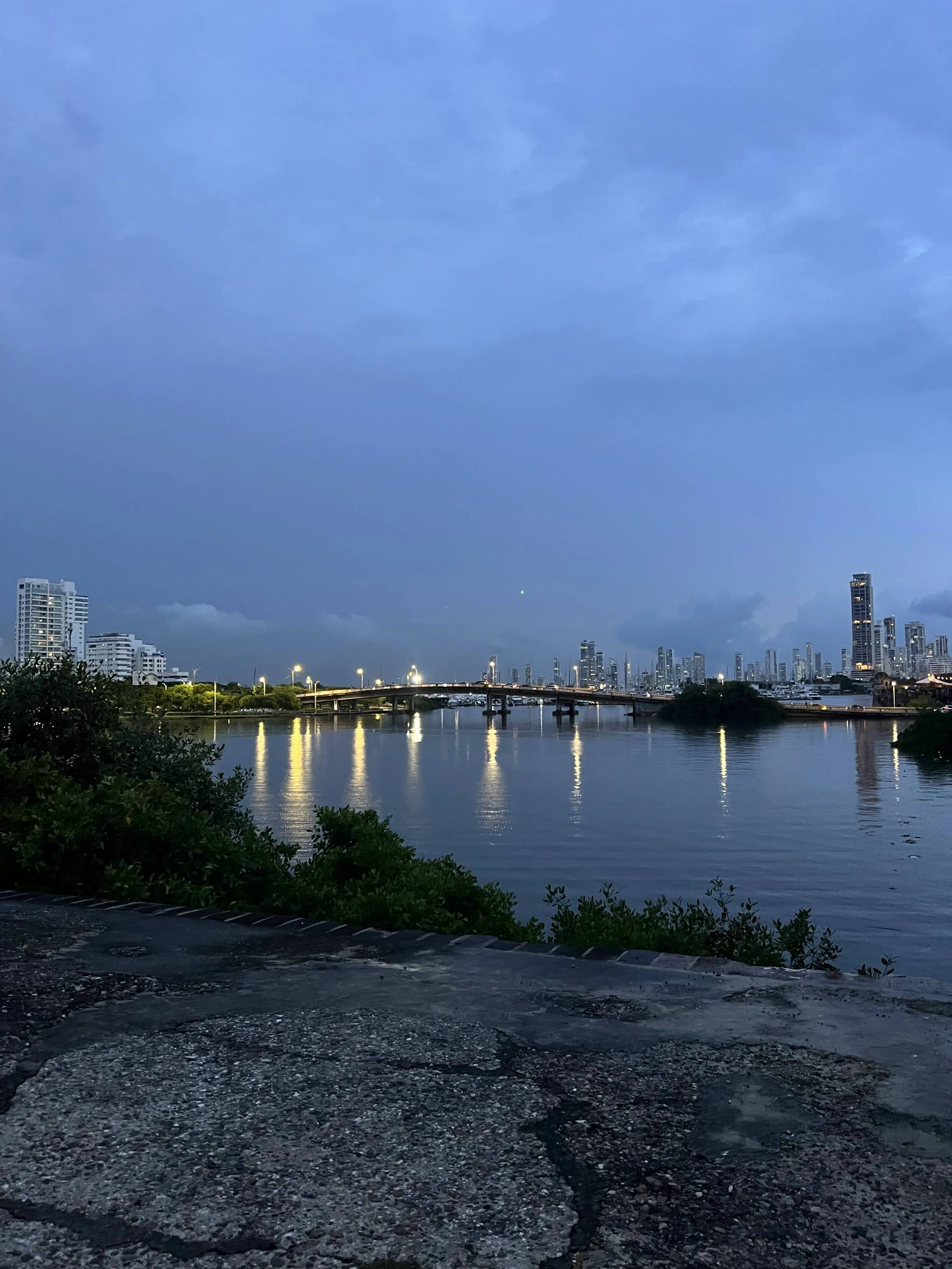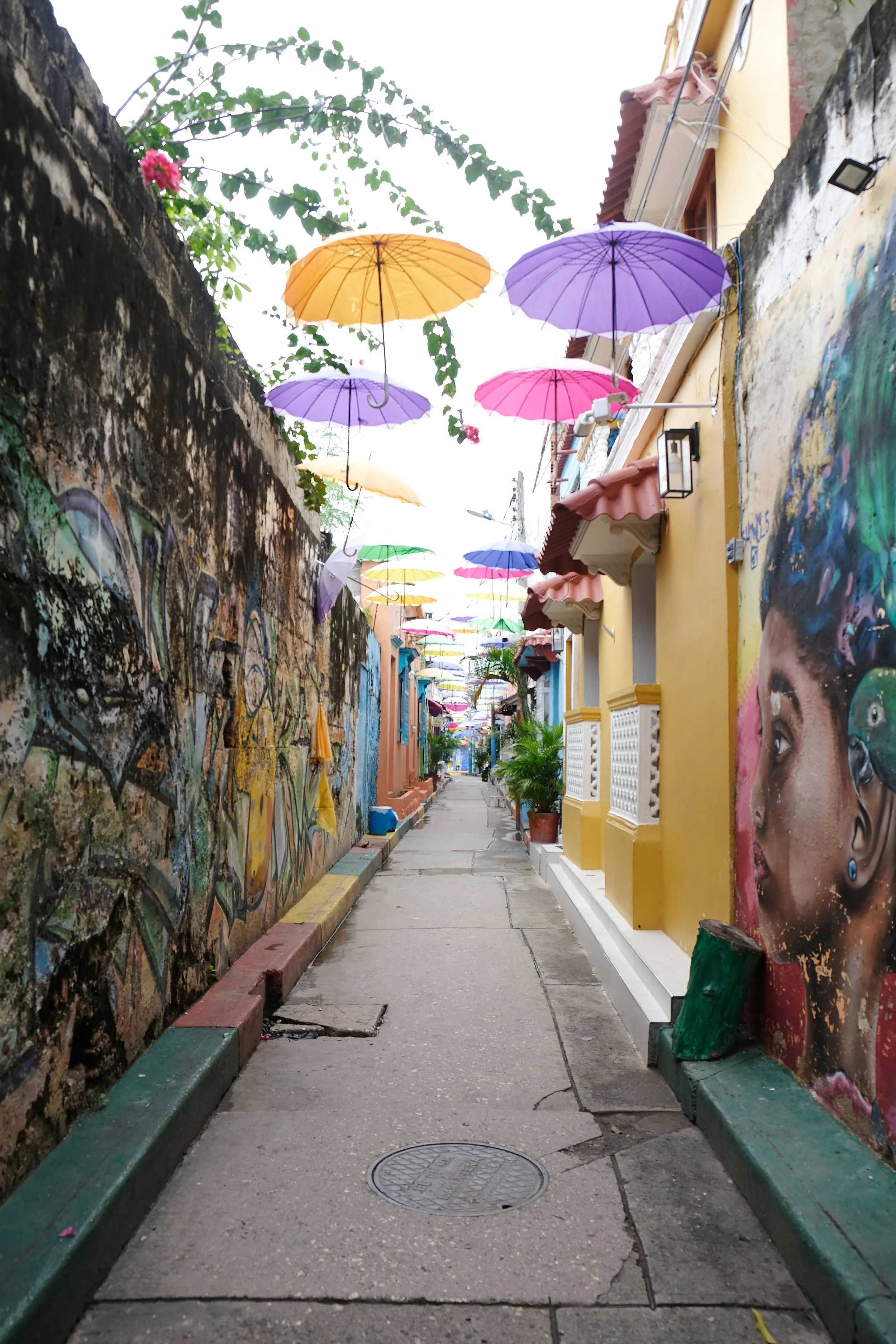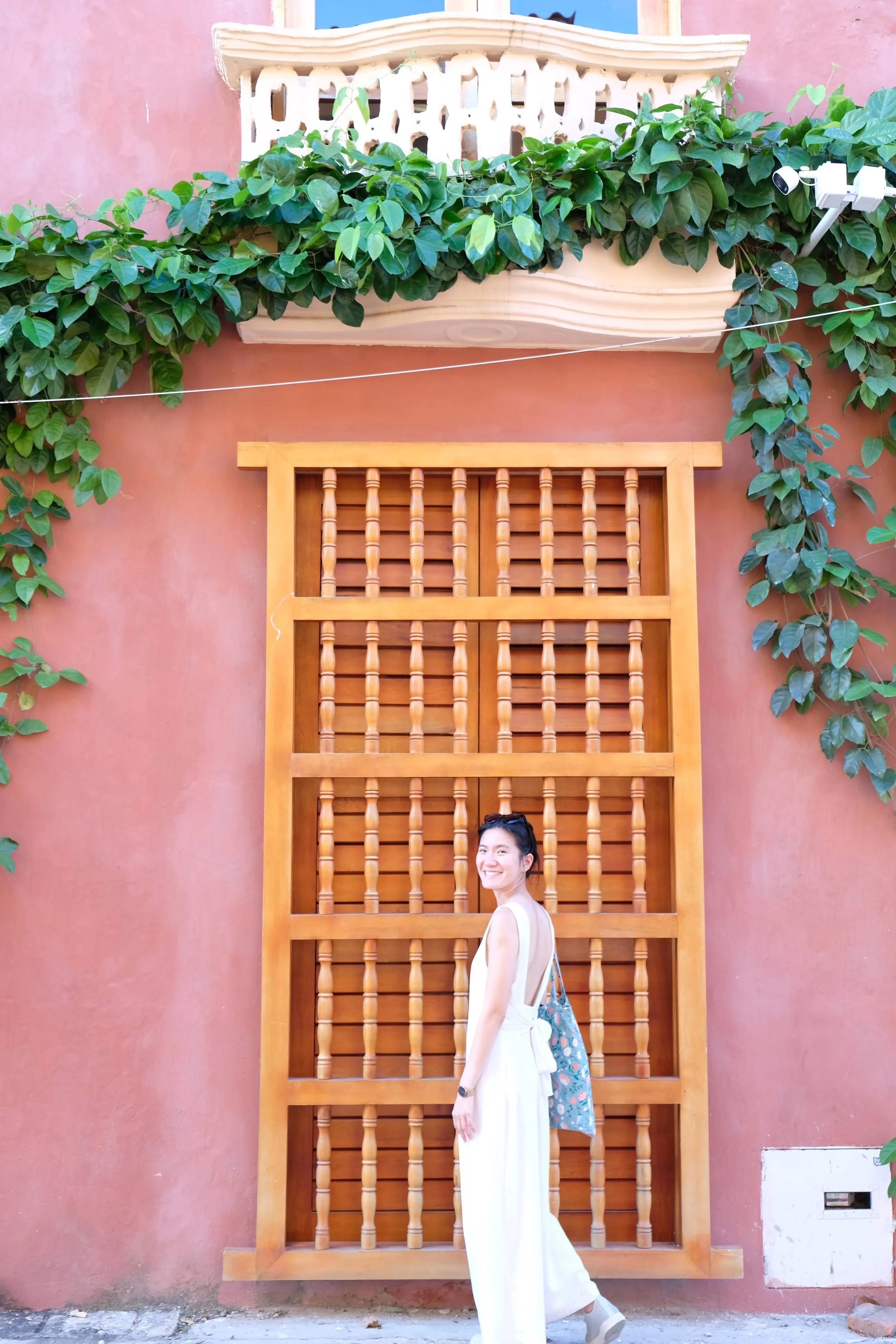Cartagena, Colombia. October 2022
POSTcard from Cartagena
Around October I would get an unusually high number of reminders from Google Photos . It turns out I like traveling in October. It also turns out that I visited Colombia for the first time exactly five years ago in this same exact month. That was my first trip traveling with my fujifilm camera. Five years later, I return to Colombia and this time to Cartagena, a port city on Colombia’s Caribbean coast, camera in hand, ready to capture the city’s beauty.
I have the benefit of working from anywhere 4 weeks in a year and finally decided to take advantage of that this time around. We booked a flight out from NY on a Saturday morning, leaving us the weekend to explore the city, reserved Monday and Tuesday for work, and took off for the rest of the week to close out our vacation. Kicking off the start of the trip I took public transportation to the airport (the LIRR is more convenient than you would think) and made it to the airport on time, except we almost didn’t make it on the flight. I had done my research and confirmed that no visa is needed, but what I neglected was the new covid-19 entry requirements. The Colombian government requires a travel authorization (known as Check Mig) to be completed within 24 hours of your flight, and you are required to have a physical copy or digital (non photo) version of your vaccine card. Upon boarding we were made aware of the Check Mig requirement and scrambled to completed the application on our phones. I might have accidentally paid for a service to expedite the authorization - I still don’t really know. As the line to board the flight dwindled and I kept refreshing the webpage and hoping the status would change from pending to approved. The line was down to the last few people (who all had trouble with covid-19 entry requirements) and the gates were about to close, and by some miracle the button for the confirmation appeared on my phone screen and I got the pdf that would clear me for boarding. My friend also got her Check Mig authorization but had the extra task of getting a digital copy of her proof of vaccination as she only had a photo of her vaccine card. The NYS Wallet didn’t work for her and it was CVS who saved the day when she was able to pull her booster record after logging into her CVS Health account. We dashed to board as the gates closed and were two of the last people to make it on the flight. To this day I still don’t have an emailed copy of the travel authorization, can’t log back onto the Check Mig website or the service I used to expedite the application, so it is definitely a miracle we didn’t have to get rebooked.
After some light reading, a little nap and some phone scrolling thanks to the free wifi on board, we landed in Cartagena! There were some commotion while we were going through immigration, but we made it! We picked up our bags, exchanged some cash and hopped on an uber to our hostel Selina where we’ll be staying for the week. The space has an airy atrium filled with plants (great aesthetics, not so good for sounds), is very well decorated, and has a co-working space on the ground floor, perfect for any work remote situations.
For a belated lunch/ early dinner we went to Senen la Casa del Marisco, where we had our first ceviche, seafood soup with coconut rice and a shrimp dish of our trip. It was a solid first meal and the owner Jesus made sure I learned how to say passionfruit in Spanish (maracuya) so I can try some during my stay. We also stopped by the Selina rooftop for our welcome drinks. We had the Costeñita, a local beer brewed in Bogota. One thing I noticed on the beer bottle was that the size is printed as cm cubed - which I have never seen before even growing up with the metric system. After some Googling I found out that cm cubed = cubic centimeter = cc. I don’t know why that never clicked for me before…
Libertario Coffee Co
The next morning for breakfast we headed to Libertario Coffee Co in Getsemani to get a taste of some authentic Colombian coffee. It was a short walk from our hostel through some pretty alleys and flag hanging streets to the corner cafe. This place was recommended to us by a friend and they have a wide variety of coffee and breakfast items. Their cold brew comes in a tall wine bottle and is served in a cute glass, and it was some amazing cold brew. I made plans to come back on the last day of the trip to get myself some beans to take home.
Cartagena: The Walled City
The next activity we had was a walking tour of Cartagena. We met our tour guide at the Camellón de los Mártires, the square that sits in between the area known as Walled City and Getsemani, the neighborhood we’re staying in. Our group of UK, Netherlands, Germany, Philippines and US (just us) visitors joined our tour guide Eddie, and learned about the history of the area, how Getsemani and Walled City used to be islands and were connected by drawbridges, and the convention center by the water used to be the location of a slaughterhouse and market that has now been moved to Bazurto about 15 mins away from the area. Monumento Torre del Reloj, the original fortified entrance to the city now with a clocktower addition, sits at the end of the plaza. The original gates, known as Boca del Puente (Mouth of the Bridge - as Getsemani and the Old City were connected by bridges), opens to Plaza de Los Coches, once the center of the slave trade in Cartagena. This end of the plaza is a tourist hotspot with plenty of vendors with carts or coolers selling anything from drinks to souvenirs. Expect to be hassled as you make your way through the city gates into the larger plaza beyond.
Monumento Torre del Reloj and Plaza de Los Coches hold some darker history for this city. Cartagena was the main port of entry for slaves entering into Colombia and those who didn’t make the journey or were deemed not healthy enough for work would be left at the gates at Monumento Torre del Reloj to die. Those who were deemed healthy got a mark imprinted on their bodies and were traded on the plaza grounds. The plaza is now named Plaza de Los Coches as carriages are allowed to be parked on one side of the square. At the end of the square is El Portal de los Dulces, where you can find vendor stands selling all kinds of sweets under the colonial archway. A sampler box of treats made with coconut and panela (cane sugar) called alegrias with all sorts of flavors like passionfruit, guava, almond will surely bring some joy! Not to mention they are only $1-2 for a box!
Continuing down the road on the left of El Portal de los Dulces we arrived at Plaza de la Aduana, an even larger plaza surrounded by colonial buildings. One of them is the office of the mayor with an original set of arched door. Eddie said there has already been 11 mayors in the past 10 years, meaning each one served less than a year when their terms are supposed to last a few longer.
Looking up to the balcony is where one can differentiate the difference between a colonial style building from one built in the republic - colonial style buildings have wooden balconies and a winged edge roof - to catch witches. Back in the day if females were accused of being practicing witchcraft, they would be weighed. If she is under 70kg, that is considered light enough to fly, that was enough proof that she is indeed a witch. Nowadays the winged tip serves to drain water and prevent the wooden balconies from rotting.
The next stop was Plaza de San Pedro Claver, home to the Museo de Arte Moderno Cartagena and Santuario de San Pedro Claver. Pedro Claver is a prominent figure for Cartagena because he bought all the slaves who were too sick to be sold and healed them, and set them free. He became a saint after he died and the Spanish, Cartagena and the Vatican all fought over where his remains should go… and let’s just say the church with the museum dedicated to him in Cartagena has 1/3 of his remains and the rest are evenly distributed.
We continued to a viewpoint up on city walls and Baluarte de San Ignacio, the fortress that protected the city from pirates and offer great view of the waters and the cities beyond. Within the city walls was the building where Pedro Claver would watch from the balcony to see when the ships carrying slaves would come in so he could head over to Plaza de Los Coches to greet them.
This is the longest balcony in all of Cartagena - 17 windows in total.
As we made our way through the streets of Centro Historico, our guide Eddie explained the significance of the symbols on the doors: lions represent the military, lizards represents royalty, and marine life represents commerce/ merchants. The larger sets of doors are for carriages, and the smaller sets of doors for slaves. I spent a lot of time taking photos of every street corner - no only are the buildings and balconies painted with vibrant colors, there are plants and flowers everywhere! The community definitely put a lot of thought into the plants surrounding the buildings as you can see how well managed some of the plants are. They complement the buildings in the most beautiful way (scroll down for more photos!). As we ended the walking tour, Eddie gave us recommendations on places to eat and other parts of town worth visiting, and the best spot to view the sunset.
Época Espresso Bar
Época is a two-storied cafe and bar located in the center of Centro Historico. It’s the cutest spot with a spiral staircase leading to the 2nd floor. We throughly enjoyed our simple lunch and drinks, and I wished I try more of their specialty drinks! The coconut rice just complete elevated the simple salad bowl I had. As I am writing this I am listening to their playlist on spotify and imagining I am back in Cartagena sipping the coffee.
Museo de Arte Moderno Cartagena
We stopped by the Modern Art Museum after lunch to check out some local art. Some of my favorites:
San Diego and La Serrezuela
In the late afternoon we spent time in the San Diego neighborhood, a quieter part of town with the same buzzing plazas as Centro. Crossing over from Centro to San Diego, we came across an empty lot. Gated and deserted, the abandoned building only has a few kittens standing guard in the atrium. The space stood out against the rest of the occupied storefronts and residences along the street, and left me wondering the changes the city has gone through since it became a UNESCO world's heritage site in 1984.
At the edge of the San Diego neighborhood is a large, upscale mall La Serrezuela, formerly a bull fighting ring (as depicted in one of the paintings from the Modern Art Museum!).
We stopped by a juice shop to re-hydrate, and saw Castillo de San Felipe de Barajas in the distance beyond the city walls. Further into the distance with the high rises is Manga, another island outside of Centro.
On our way back we headed to Plaza San Diego for Dora’s for some local street food. They didn’t have carimanolas available so we went for the other fritos - all were delicious!
Just past the plaza on one of the streets I saw someone open their front door, dropped off a very green lizard that’s about a foot long on the ground, and then shut the door. The bright green lizard wobbled down the street, and eventually entered one of the drainage holes and disappeared from the sight. I think I snapped this photo too late and the lizard had already disappeared, otherwise this would have been an interesting shot.
Golden hour in San Diego made a great photo op. One cannot not pose in front of these instagrammable walls while enjoying a stroll.
El Arsenal: The Rum Box
Dinner is back at Getsemani at The Rum Box where we kicked off our meal with a rum shot paired with chocolate, and a smoky cinnamon rum for me.
The carimañolas, ceviche, peppers and sea bass with passionfruit sauce were all delicious, and we finished off the meal with rum chocolates. I even met a server at the bar with my exact same name which is a rarity!
Ábaco Libros y Café and sunset stroll
The next day I powered through the majority of the day working in the hostel room and didn’t leave until after work hours. We stopped by Ábaco Libros y Café, a small bookstore with a coffee bar. I went for my usual purchase whenever I visit bookstores - postcards, and asked for directions on where to get stamps. From there we followed the sunset over to Baluarte de Santa Cruz for a lovely view of the sunset - the Caribbean sunset!
Cafe San Antonio by Casa Jaguar
In the middle of a work day I stepped outside for a lunch break at Cafe San Antonio, a cute little cafe just a 3 min walk from the hostel. It was a solo lunch since my friend had a call to take, and I started off my meal with a limonada de coco (got a stamp of approval from my server) and the trio de arepas - one with pork and cheese, one with chicken, and one with pork and plantains. I finished the whole thing. The wait staff was also super nice and allowed me to order take out for my friend through Google translate, and my friend said that was one of the best omelettes she’s had!
Late afternoon Getsemani
After wrapping up our workday, we did a walk through Getsemani, the artsy part of town. We have plans to do the Getsemani walking tour to learn more about the history of the neighborhood but will likely be doing it in the rain as rain is in the forecast for the rest of our stay. Meanwhile, we took advantage of the nice weather and the lighting was incredible against the photogenic town. There were streets with colorful flags and umbrellas, and shadows filled the streets as the sun sets.
Cafe del Mar and Alquimico
For dinner we headed back to Centro Historico for a sunset dinner at Cafe Del Mar. The outdoor restaurant is located on the city wall by the edge of town so there is an unobstructed view of the water and the sunset. Day turned into night as we enjoyed our pitcher of sangria, plantain chips, ceviche and NY strip steak. Then we made our way over to Alquimico, a 3 storied bar that’s been rated #10 of the World’s 50 Best Bars. It was earlier in the evening on a Tuesday, but bar was already quite busy. We were seated on the ground floor by the bar in the center of the atrium, and I had a ginger infused white rum called Inquisicion. Our server Andria was very nice and told us about the second and third floor of the bar - each floor actually have different menus - first floor is where the main action is with cocktails, second floor serves classic drinks with a twist, and third floor is the rooftop bar that opens starting Wednesdays. Normally a drink at a bar like this would have cost me upwards of $20 in New York (probably around $25 now with inflation), but here in Cartagena at one of the world’s best bars, $7 will do for a great cocktail.
San Diego and Las Bovedas
The next morning for breakfast we ventured into San Diego at a cafe called Érase un Café Calle De La Tablada for breakfast before heading to Las Bovedas for some shopping. These are former barracks turned into souvenir shops, and while some might say this is a tourist trap, I had a great time looking through postcards, handcrafts and artwork. My friend found some great Fernando Botero artwork and I got a small print. We also stopped by a local handcraft store which features handcrafts from local artists.
With our bags a little heavier from our purchases, we walked back through San Diego for lunch. Pretty walls and doors did cause us to stop so our walk of 10 mins turned into 20, and a fresh fruit cart added another 5.
Restaurante Espiritu Santo
At peek lunch time Restaurante Espritu Santo was buzzing. The entire dining hall was packed with people waiting to get in for a seat. Our walking tour guide Eddie had recommended this place for its wide selection and local pricing. We started with soursop juice, aka guanabana, a fruit local to the Caribbean. The signature mote de queso (cheese soup) is already sold out so we opted for the Cazuela de Mariscos, a seafood soup with coconut milk, and a platter of bandeja paisa, a mix of rice, beans, beef, eggs, chorizo and arepa. Portion sizes were very generous and of course we couldn’t finish all the delicious food. Side note - look for their business card when you go up to the counter to pay (cash only!). It’s the size of a postcard and featuring images of the local Cartageneros - selling shaved ice and floaties.
Cafe del Mural
In the afternoon we were back in our stomping ground (the 2 street perimeter of our hostel) and we got coffee at Cafe del Mural. The cafe only opens at 3PM, has a huge selection of coffee for you to enjoy at the small shop or take home.
Let’s not forget the cafe is located in an alley that is surrounded by murals!
La Cevicheria and Alquimico (Part 2)
Following the food-steps of Anthony Bourdain on his show when he visited Cartagena, we went to La Cevicheria in San Diego to try out the ceviche from which the restaurant takes its name. We started off with a limonada de coco (look how cute the paper straw is!) and ordered the ceviche with squid, shrimp and fish of the day with coconut and lemon. Different from other ceviches we’ve had on the trip this one was more like a soup than a salad - the coconut and lemon broth was very flavorful and the seafood was A+, hands down the best ceviche we’ve had on the trip. Our main course was the paella goddess of the sea which comes with lobster and boy it was a huge plate for two. It was slightly salty for our taste but I couldn’t stop from spooning away.
After the big meal we went back to Alquimico to check out the 2nd floor which features classic cocktails with a twist. The place was definitely busier as the rooftop was open for business!
Bazurto MarkeT + Colombian Cooking Class
Bazurto Market was on my “want to go” list of places early on during my Cartagena research but I hadn’t figured out how to get there - it’s a 20 mins drive away from the main part of Walled City and Getsemani - or how we would navigate through the local market with little to no Spanish. It was actually through my research of places to eat where I stumbled onto Cafe Lunatico and noticed they offer a Colombian cooking class with an option for a Buzurto Market tour. Their cooking class menu, which is different depending on the day of the week, was exactly all the food I wanted to try to recreate, so we made the reservation earlier in the week and confirmed plans.
On our last full day of the trip we headed to Cafe Lunatico at 8AM to meet our guide and chef to head to Bazurto Market. On this gloomy morning Getsemani still looks beautiful.
Cafe Lunatico is located at the edge of the Getsemani and the city walls, and you can see the fortress - Castillo de San Felipe de Barajas, right across from the cafe and cooking studio. We met our chef and guide Andres who will be with us this morning and he gave us a little history of the neighborhoods beyond Walled City and Getsemani. The fortress just beyond the city walls was built to protect the city as Cartagena was the main port for gold to be transported out of the country, making it vulnerable to attacks by pirates. Further away you’ll see the Popa, the monastery built on top of the mountain. The neighborhood right beneath it is called Pie de Popa (foot of the Popa). We got a glimpse of what live was like beyond the rather touristy UNESCO site while traveling in the car, and we made it to the Bazurto Market.
Bazurto Market has been around for 50 to 60 years, with its original location within the city center where the Center of Commerce now is. The market is 24/7, allowing vendors to unload the fresh finds and for people to shop for the freshest ingredients. It’s a wet market that have vendors selling fish, produce, meats, cheese and another section for clothes, fabrics and electronics. There were street vendors pushing their full carts away from the market as we approached, and Andres explained that they have picked up their fresh fruits and ingredients and are heading off back to Walled City or Manga. the wealthiest neighborhood in the area, to station their carts to prepare for business.
At 8:30AM after a night of rain the market was wet and muddy, buzzing with shoppers and vendors, push carts and wheelbarrows, and seagulls hovering in the fish section. Welcome to the real Cartagena.
We started off in the fruits section and sampled a lot of local Colobian fruits and bought some to take back to the studio. We picked up corozo which was a type of blackberry that looks like smaller cherries, guava, a round, brown-skinned fruit that looks like a larger kiwi called zapote and its smaller cousin. We tried a cherry that looks like large grapes, mandarins, and a yellow passionfruit called granadilla which was very sweet and was one of my favorites.
Heading over to the green building of the market we found vendors selling the large leaves used for cooking and wrapping foods in bundles, and many colmenas selling all kinds of goods. I liked the name colmena (beehives) as the hive (store) holds a wide selection of products and it’s where people gather.
The whole market is like a maze and we were led through the meats section which also has cheese and grounded cassava. We picked up some for our cooking class as it is a key ingredient for carimañolas.
Venturing a little further we got to the section of traditional herbs, used to cleanse your body from bad energy and bring wealth and prosperity. We also made it to the cooked food section where large pots and pans were boiling and simmering, filling the area with a delicious aroma. This was where Anthony Bourdain dined when he visited the market and the nice ladies explained all of the dishes to us. I wanted to get the local dining experience but it was too early in the morning for a full meal, so we took a photo instead.
Andres led us out of the labyrinth and we were back in the fish section of the market, where seagulls stand on top of the umbrellas waiting for fish to be prepared so they can snag the intestines. We also spotted the large trucks filled with plantains - the highly consumed fruit that is very common in Colombian cuisine. Andres said they are usually filled all the way to the top when the ship them from around the country into Cartagena.
We continued into the Chinatown section of the town - weird name because there are no Chinese people to be seen, a busy marketplace with clothing shops, jewelry and shoe stores, repair shops and hardware stores. Nothing fancy like the high end mall we were at in San Diego, the Bazurto Mercado is the down to earth, more realistic version of life in Colombia.
Back at the studio before our cooking class, we got a taste of the fruits we purchased on the market tour. First with the corozo that we tried as is and with salt to bring out different flavors, and then boiling them and add sugar to make a juice. We also tried zapote and its smaller cousin, first on its own and then in a smoothie. We also got our welcome drink which is a sparkling water with panela and lemon.
On the menu for the cooking class was enyucado, a Colombian cassava and coconut cake, shrimp and snail ceviche, crab meat carimañolas, red snapper in coconut sauce, accompanied with coconut rice and patacones.
We learned to crack open a coconut, getting the coconut meat out and making “first” and “second” coconut milk for the brown rice, and as the smell of panela and coconut milk filled the studio we made our shrimp and snail ceviche and carimañolas stuffed with crab meat.
We sat down and enjoyed our first course with white wine before moving onto the next course, deboning the red snapper and pan frying the fish before making the coconut sauce. We also made the patacones from plantains and plated our main course.
Lunch was obviously a delicious meal. I highly recommend a class at Lunatico if you’re looking to bring out your inner chef!
Getsemani Walking Tour
Later in the drizzling afternoon I joined our guide Ronaldo on a Getsemani walking tour. We started with Sierpe Street, which got its name from its windy turns. Getsemani is a neighborhood of community and resilience, and the bright graffitis along the walls often demonstrated that. There were a lot of interesting artwork - one that reads sonrie (smile), a mulata lady, and one of the famous Colombian author Gabriel Garcia Marquez, all representing Cartagena and its unique history. My favorite was the Cartagenero - the original mural had her smiling, but someone had added the tears on - perhaps tears of joy?
We made a turn onto another street and walked through the same gallery street I have been walking through during my stay almost every day, and Ronaldo explained the meaning behind all the artwork. One was of the famous champeta (a music genre that originated from the Caribbean coast of Colombia that is a little bit salsa. hip hop and reggae) singer Joe Arroyo. He’s got 2 museums back in his hometown of Palenque because his two wives fought over who gets to start a museum after his passing.
We listened to some champeta music as Ronaldo explained how Getsemani has changed over the last 20 years. When the city became a UNESCO site in 1984, Getsemani was still primarily a family home town. It’s an area where the working class lived, and it was mainly African people. The UNESCO title started driving up property prices as well as taxes, and families have to convert their family homes into businesses like galleries to pay for taxes as tourism bloomed. As much as the community wanted to keep Getsemani a family neighborhood, gentrification is happening. There are now homes converted into airbnbs and hostel, and there is a 6-star hotel on its way.
Towards the end of the walk we made our way over to a section of town I’ve never been to - local family homes that were lit up with locals enjoying games and a night right outside their front door. We had corozo from Maria who runs a shop by her family home, made a toast and learned elegante is how to say delicious in Cartagena (but you have to do it with an expression). Ronaldo also showed us the famous umbrella street (not the same one I have been on on my own), and I decided to try to come back the next day early in the morning when there are no crowds and better lighting.
We ended the tour on the city walls overlooking Manga and Bocagrande, the two neighborhoods with high rises that stand in stark contrast to the UNESCO site. Ronaldo gave us a champeta dance lessons and explains the meaning behind the name. Since Getsemani was a notorious neighborhood back in the day, people who go out dancing could end up in fights or dangerous situations. They would carry champeta knifes to protect themselves. There was a social divide between the working class who sees champeta music as a representation of their identity and high society who frowns upon the different class and their music. Regardless, the musical genre thrived and Cartagena reminds the neighborhood with the best Champeta bars. Ronaldo’s dance moves incorporated the history where the moves resembles pulling out the knifes from your pockets, hammering left and right, and lastly riding the horse. It must have been a funny scene to others as the group of us danced to champeta music on the city wall as it grew dark in the rain, but I must say it was the highlight of the tour.
Restaurante 1621
Our final dinner in Cartagena was a fancy one - at Resutaurante 1621, a former convent which is now home to the Sofitel Legend Santa Clara. We were greeted by a staff member in a cloak on the raining streets of San Diego, and were led to the main room through a little enclosed garden. Inside the main dining room our hostess gave us a quick tour of the space. The Santa Clara Cloister and the old dining room was built in the year 1621, over four centuries ago, and we could still see the hand washing stations as well as the wells in the space. A replica of the nuns’ dining table sits in the middle of the room, and beautiful chandeliers hung high. Those probably didn’t exist in 1621 but the space is very well decorated, both inside and out. There is a personalized letter for us at our table, and our 10 course tasting dinner with wine pairings commenced.
The restaurant specializes in French cuisine with local ingredients, and each course with the wine pairing was an absolute delight. My favorite dishes were the butterfly dish and the amberjack with grapefruit and plum. Everything was so flavorful and I wished I had more space to consume all the food! We got to meet the chef towards the end of our meal and even got to take home a little loaf of bread (I ended up taking it all the way back to New York!) This was a wonderful experience that I am going to try doing more of in other countries! Be sure to make a reservation ahead of time as they are reservations only, and opens only from Thursdays through Saturdays.
Getsemani in the morning
On the last day of the trip I set my alarm to early in the morning so I can get some shots in Getsemani before the morning crowd. I asked for directions to the post office at the front desk on my way out and said hi to the Selina resident kittens (they both have the Selina collar!) Interestingly enough mail, or at least postcards, doesn’t seem to be a thing in Colombia and the staff took a while to get me an address on Google maps… I headed for the streets and decided to stop by the post office on my way back.
Without the crowds, Getsemani feels more like the neighborhood town. A few people are on their way to work, and others just tending to their family home. The umbrella street is completely different from last night, and I noticed the donation box that I didn’t see yesterday.
After my morning walk, I headed to the shipping center near the convention center only to find out they don’t mail postcards, only packages. With no Spanish, I managed to get the address of the actual post office (thank you Google Maps!), located in the non touristy section of Getsemani. I followed Google Maps and was led to a commercial area surrounded by shops and taller office buildings, and managed to find the 4-72 post office. I handed my postcard over, hoping that this postcard would make it back to me hopefully within the next 2 months.
Back at the hostel we packed up and stored our bags, and we’re off to have our breakfast and do some last minute shopping before our flight in the afternoon. At Liberatario, we had a small breakfast and I got some coffee beans to take home, purchased some sweets from El Portal de los Dulces, bought myself a cute tote bag, and purchased some chocolates to take home to share. Some last shots of the city, a quick meal at La Casa de Socorro, and we’re off to the airport.
On the ride to the airport I recalled our first taxi ride into town. Everything felt so new and exciting, and you’re ready to explore. By the end of the trip you start to feel a sense of familiarity with this town - the streets you take to return to your hostel or hotel, the little convenient store on the street corner where you overpaid for your bottled water, the sounds of loud music that indicates the night is about to begin… You start building a routine and making the unfamiliar familiar, and then it was time. Time to return home to the original. The original routine you developed back at home.
The routines may be developed and forgotten, but the fond memories always will stay. ¡Hasta luego! Colombia.
